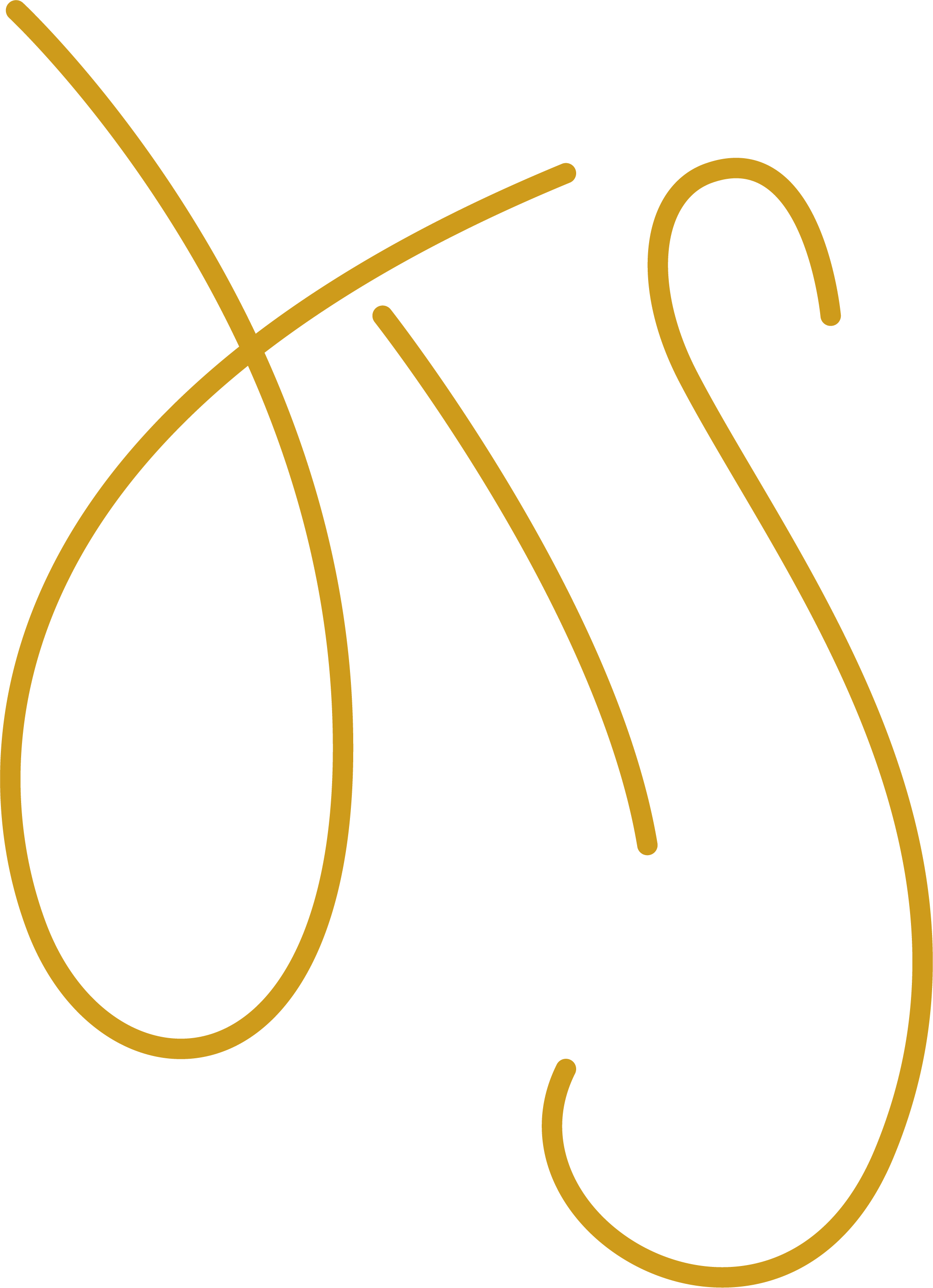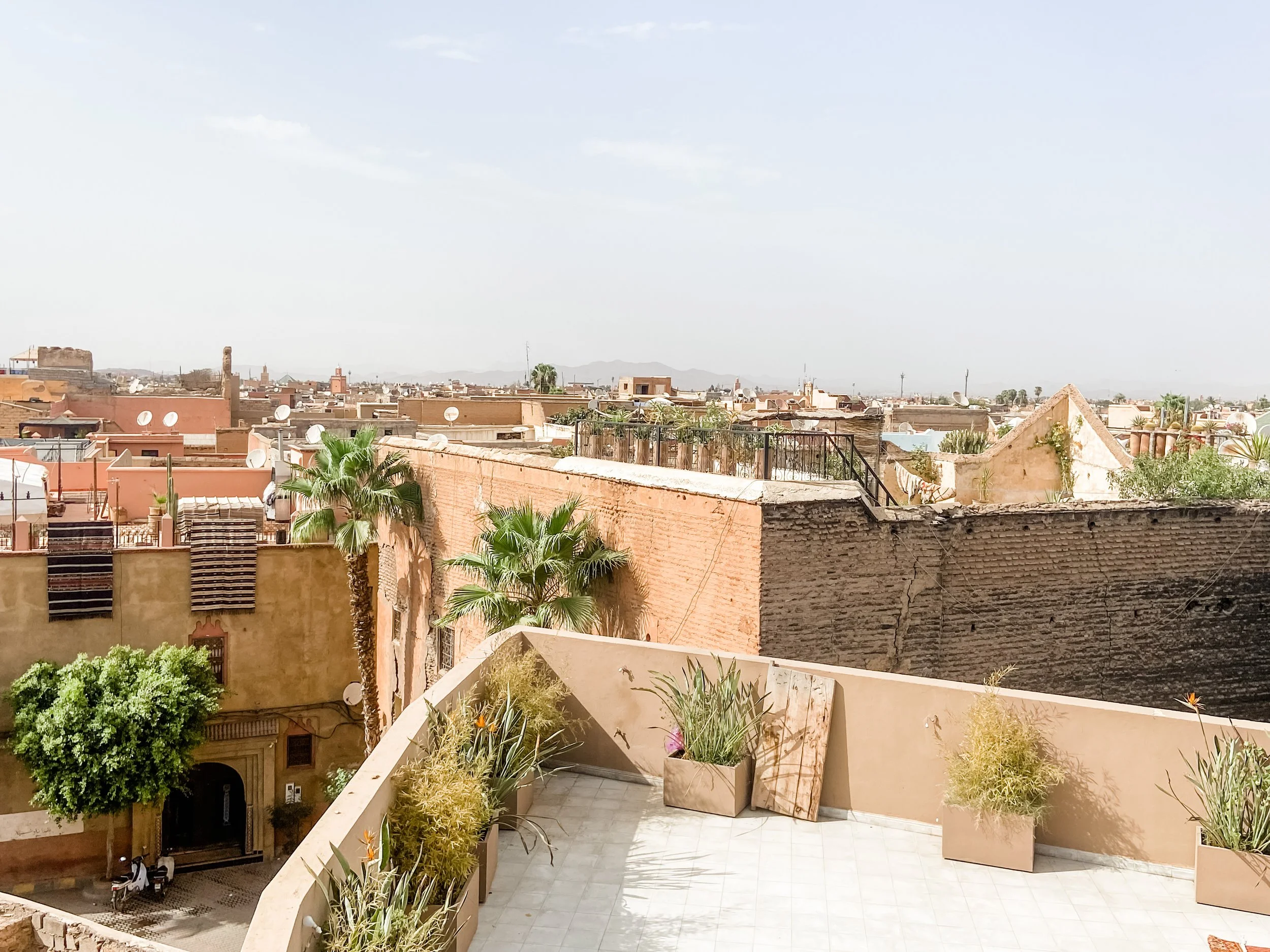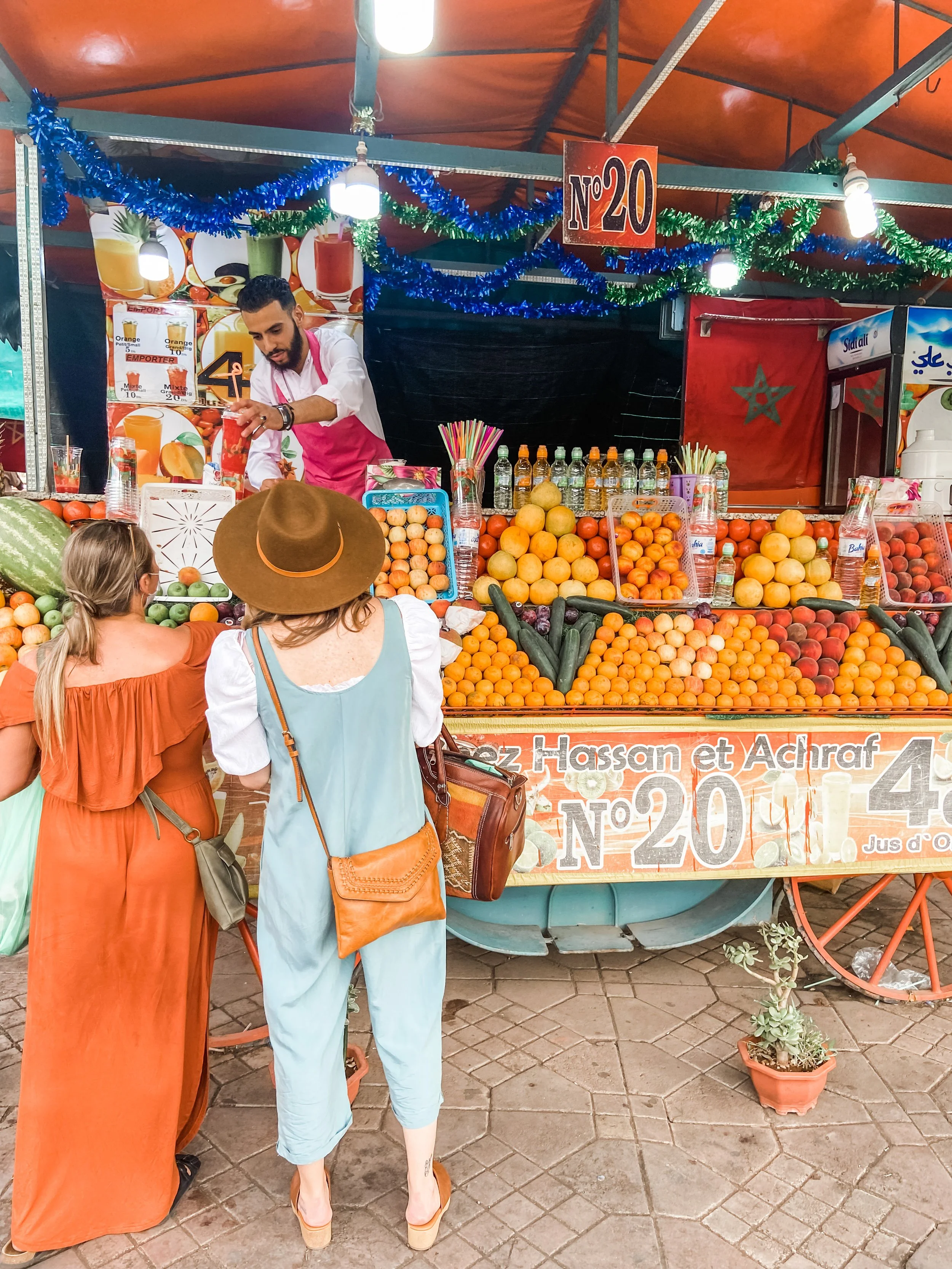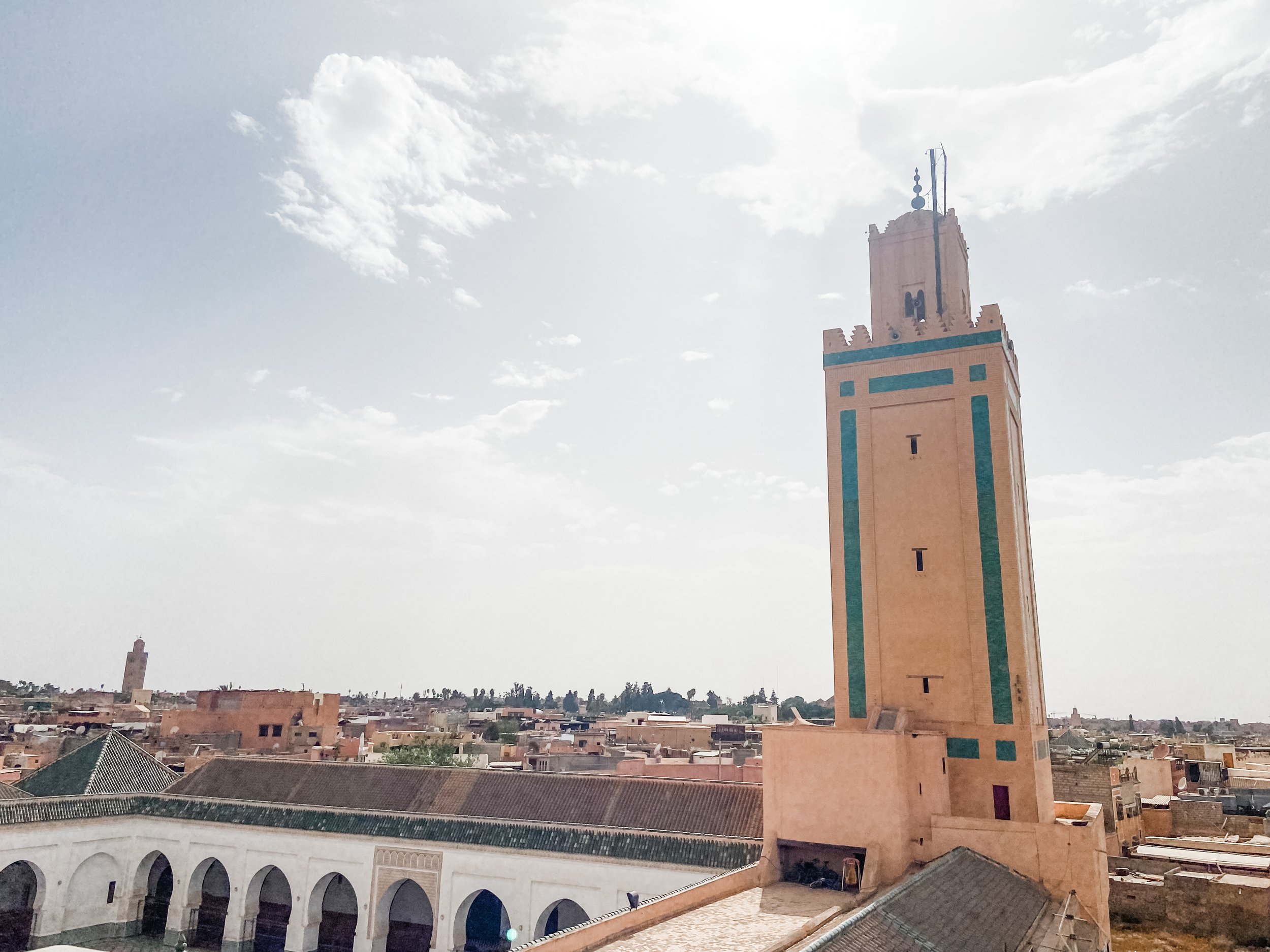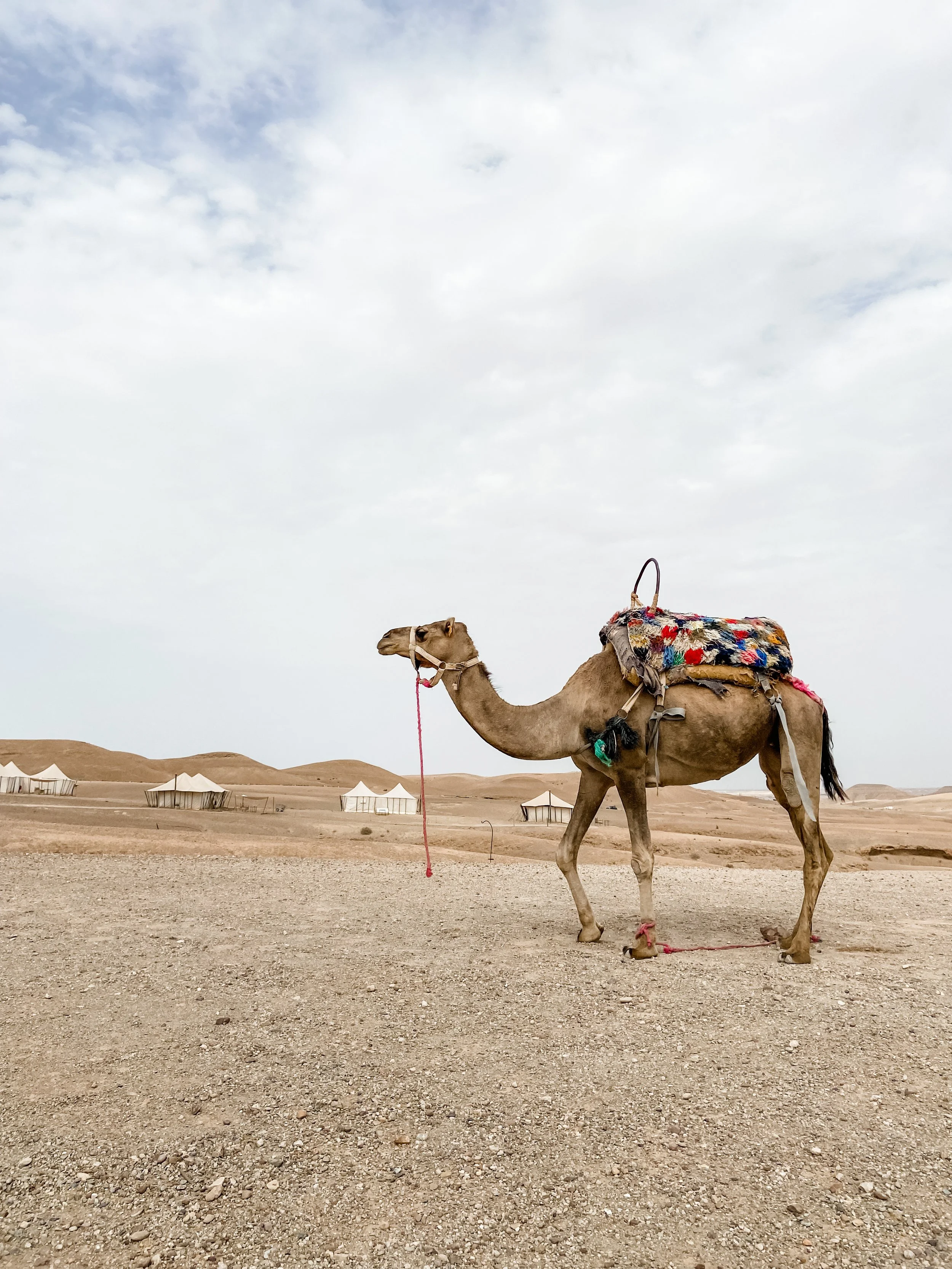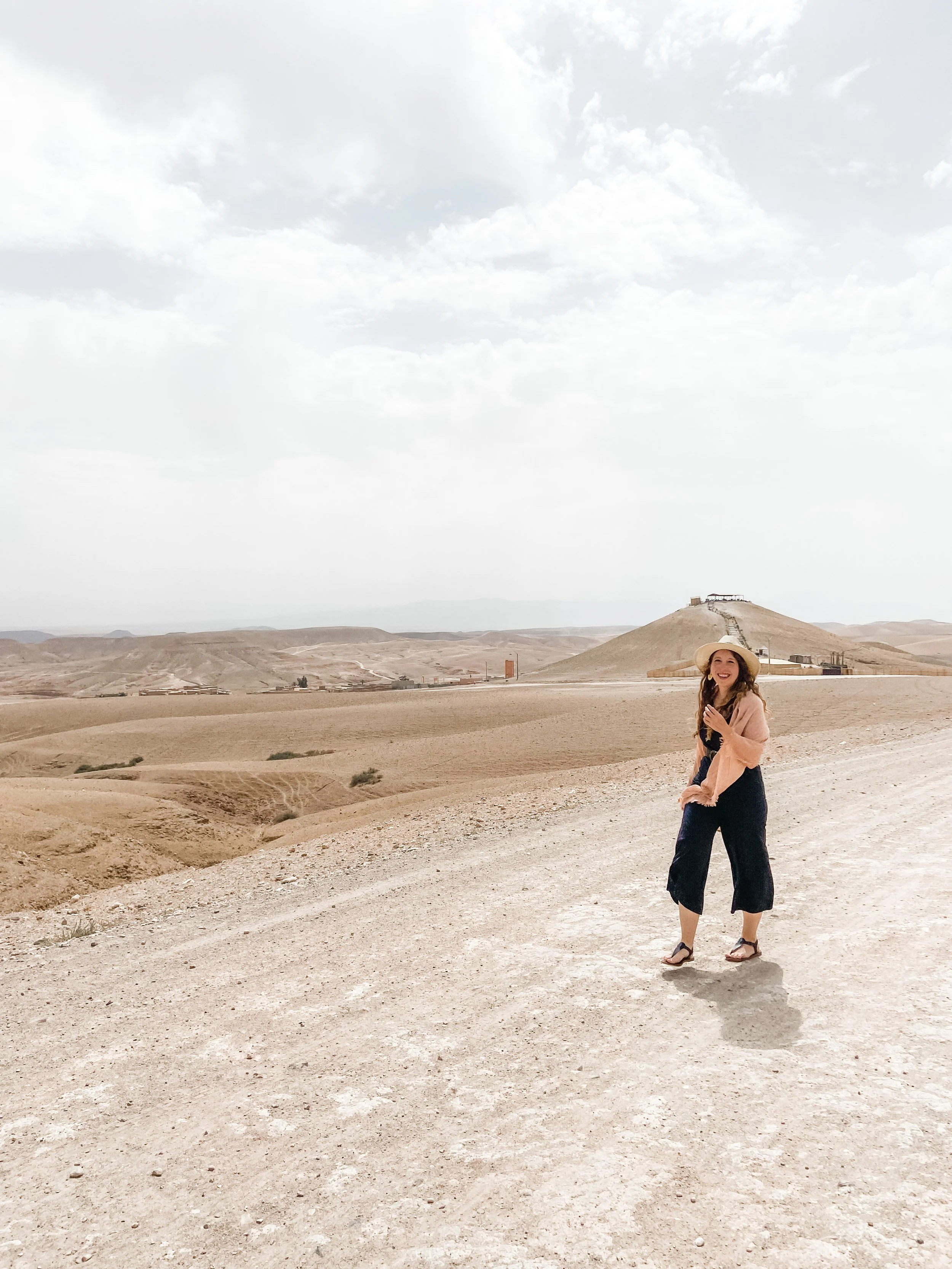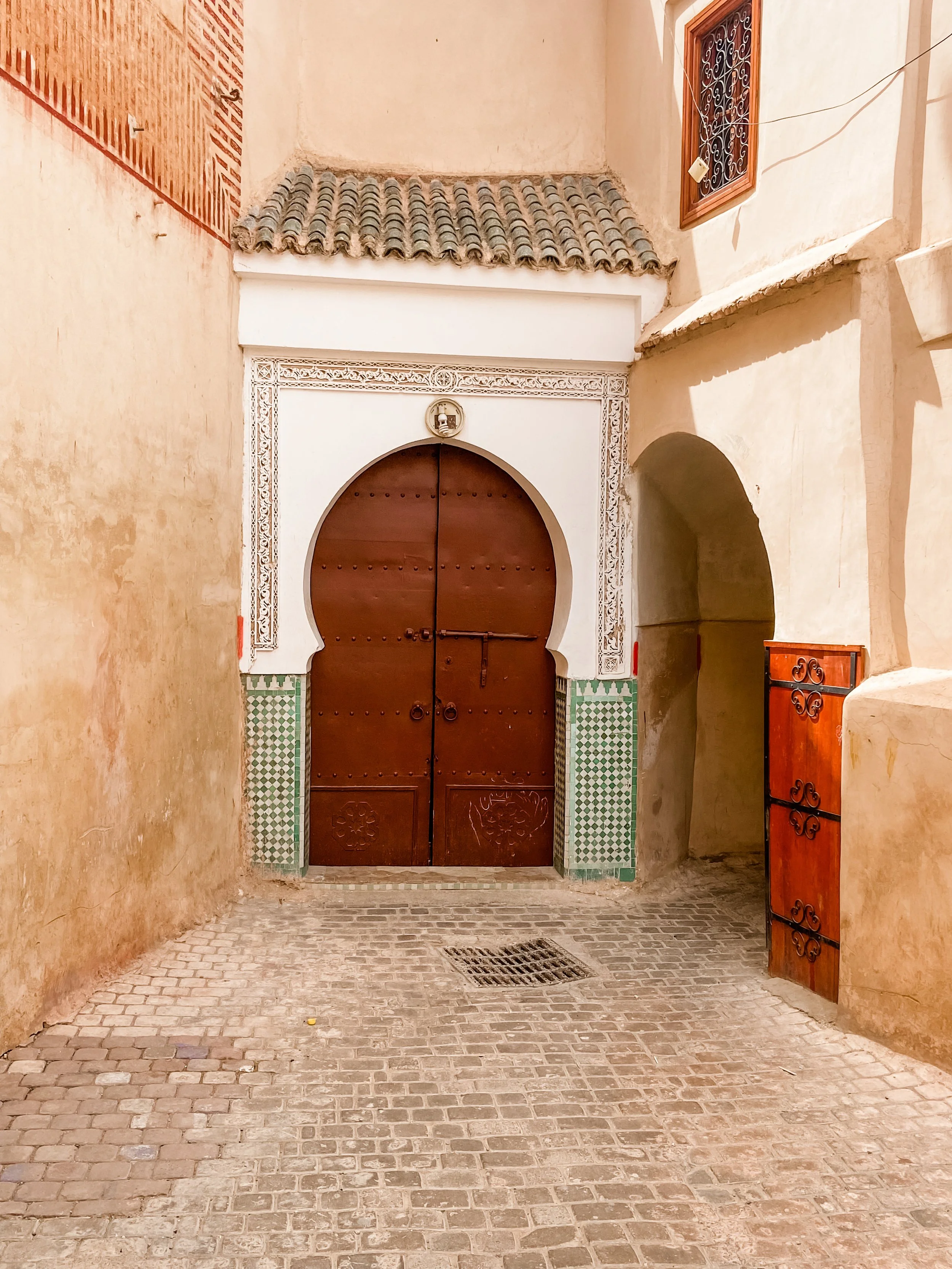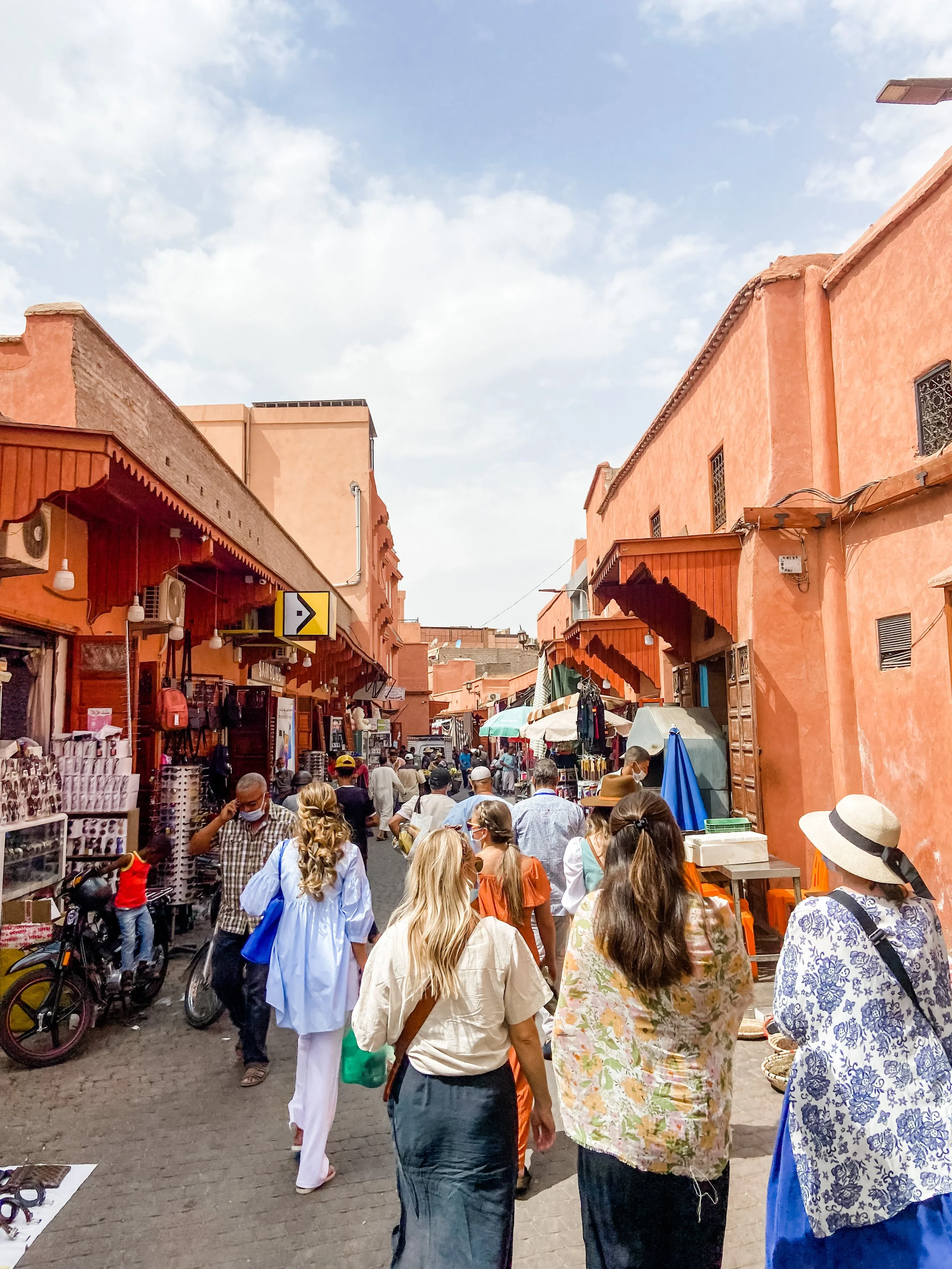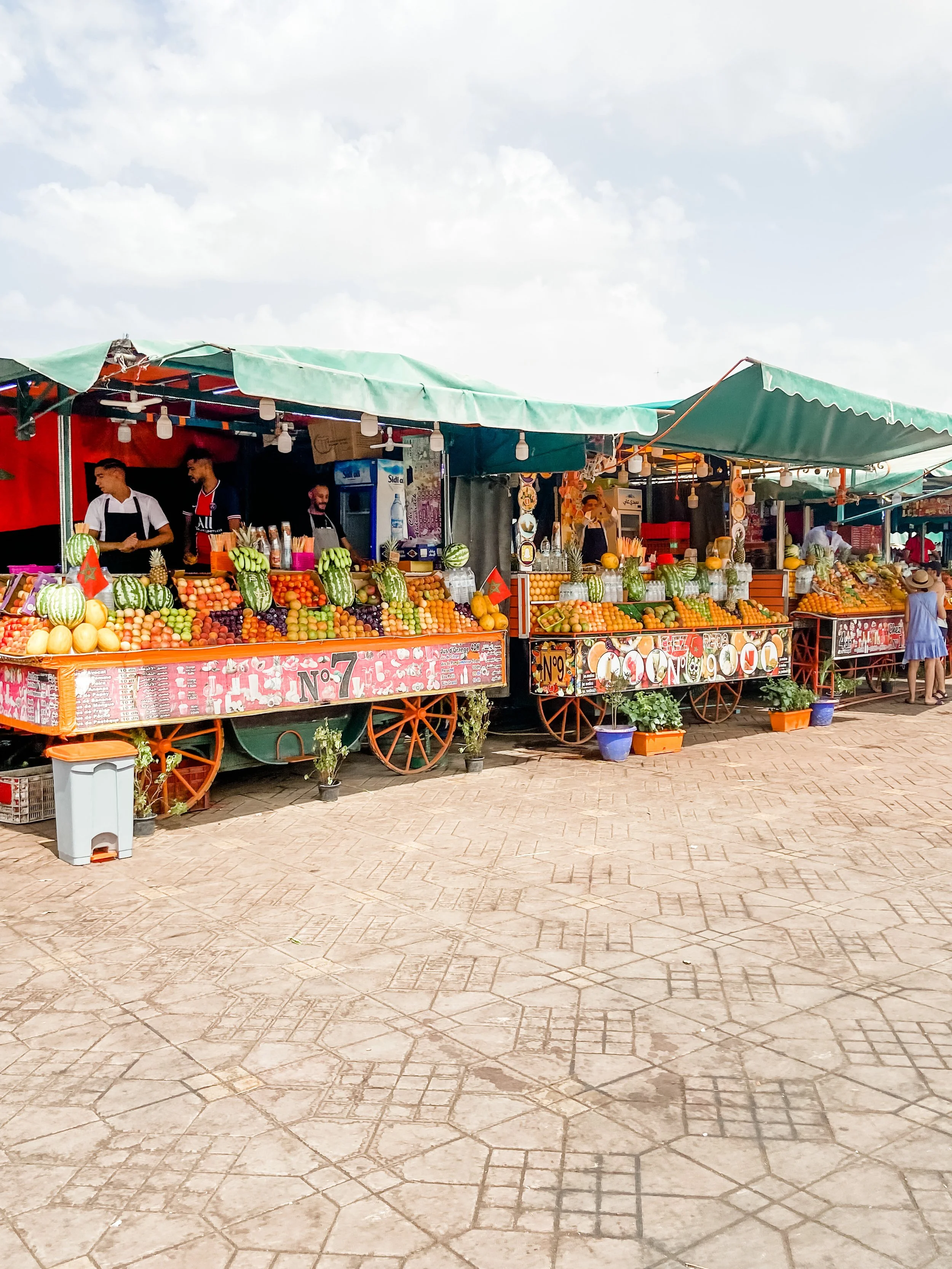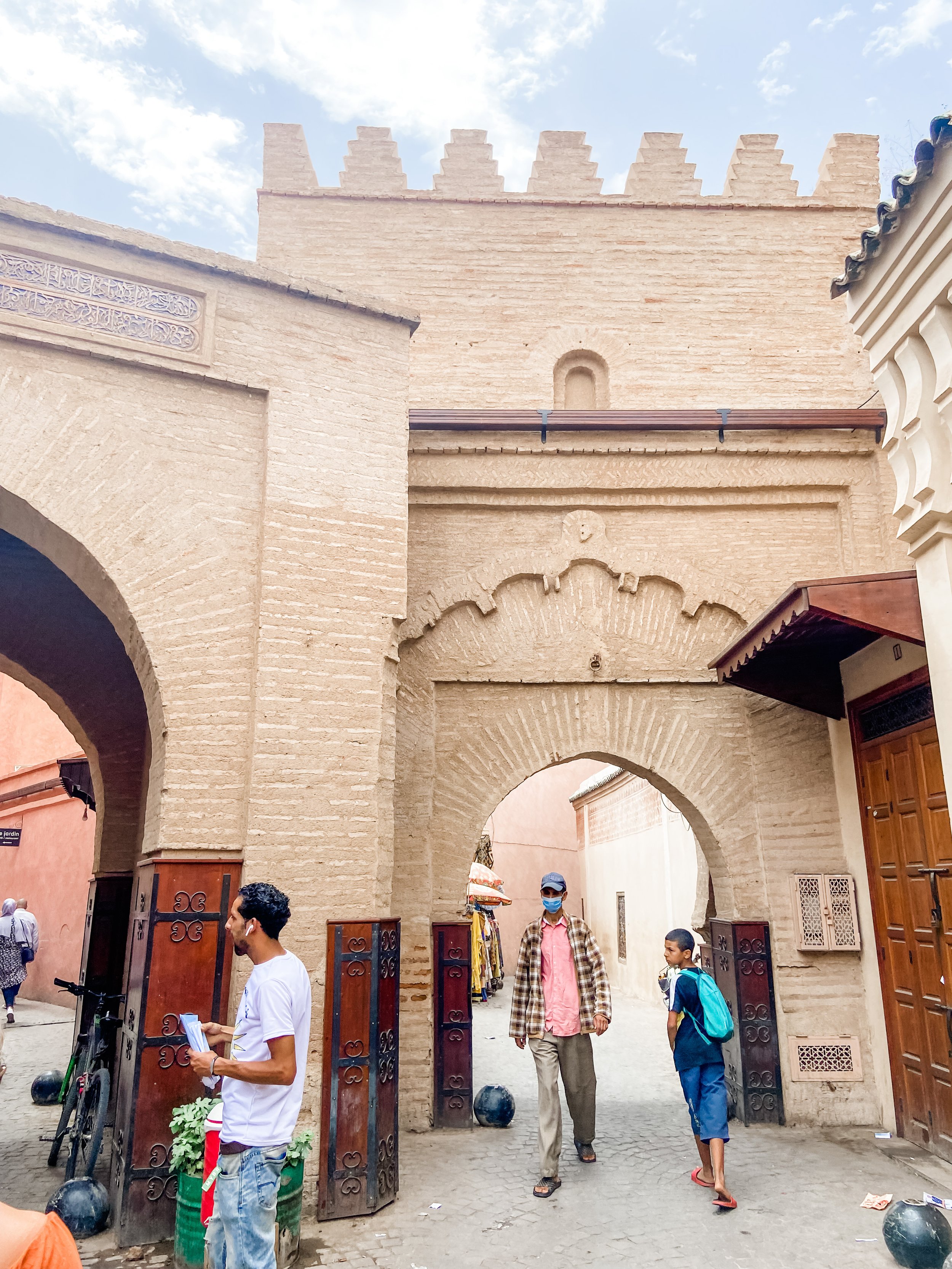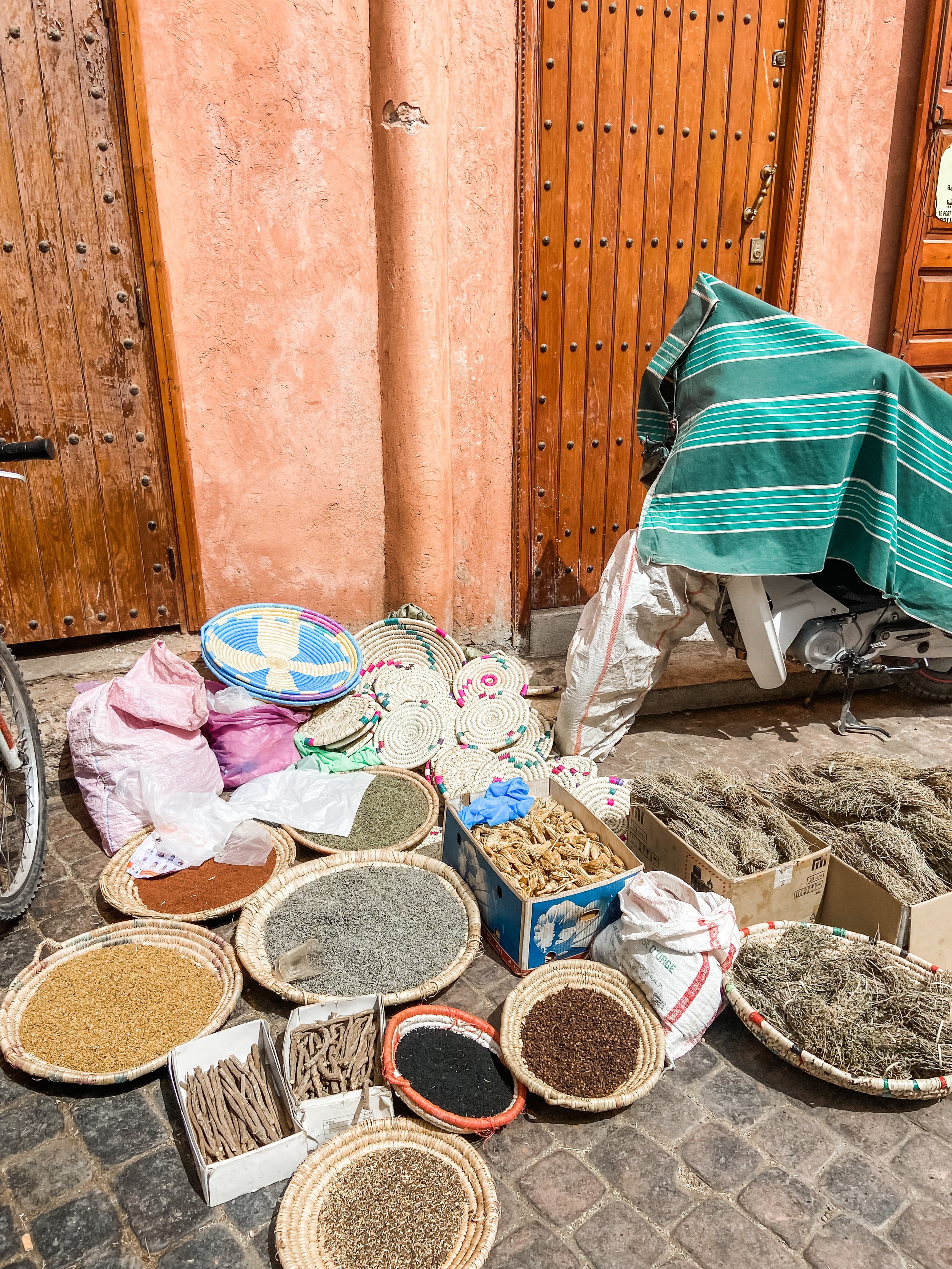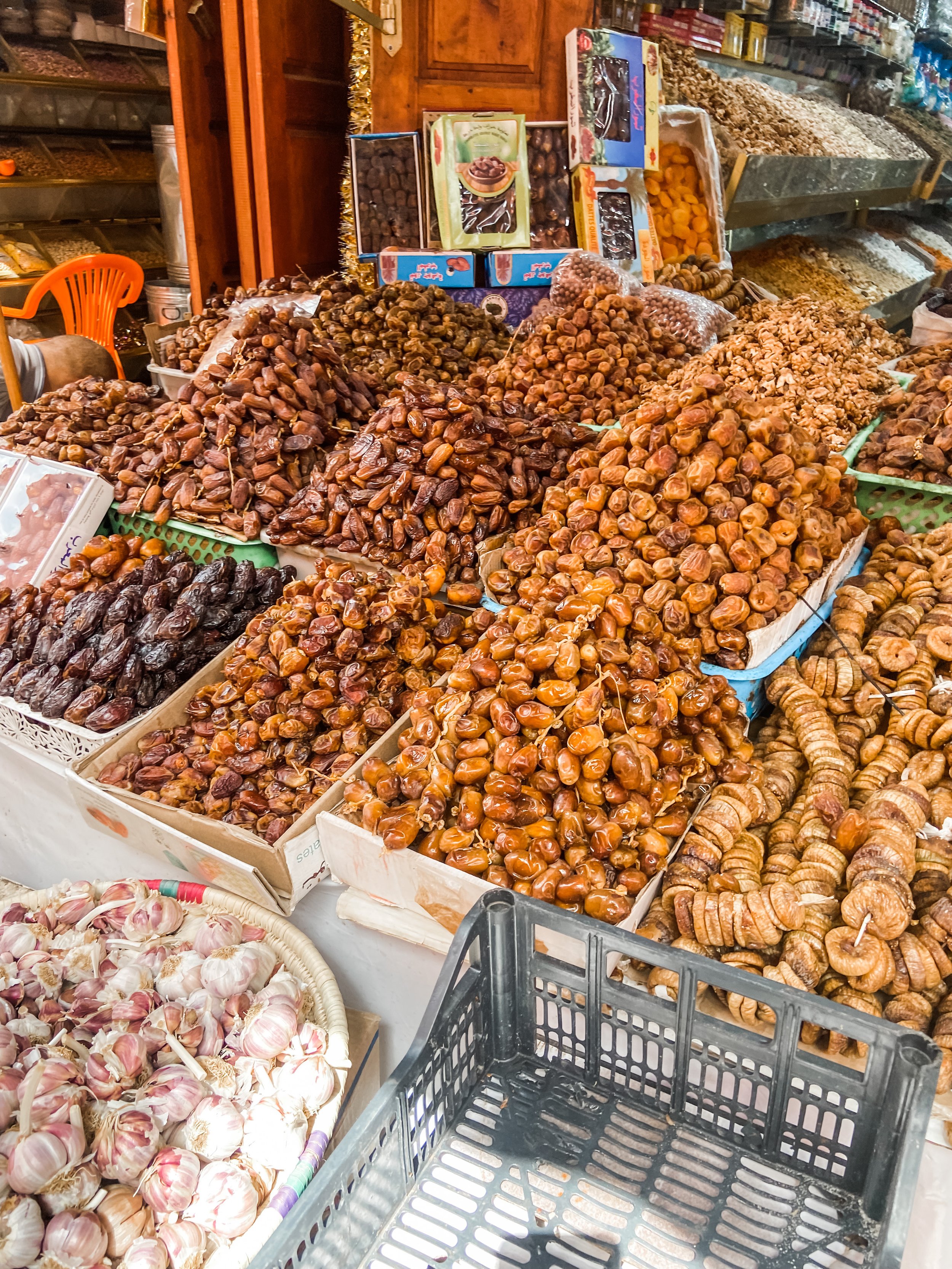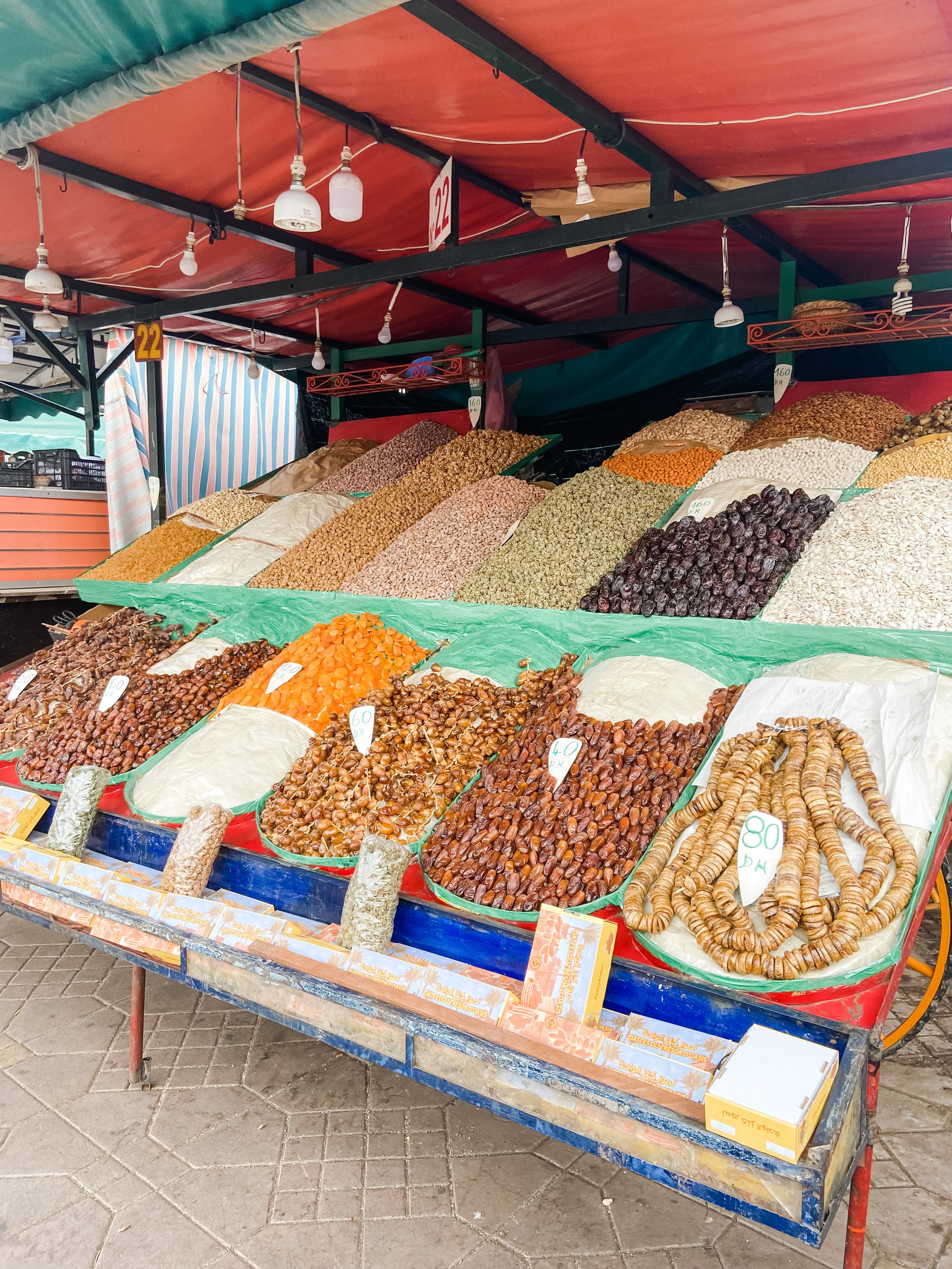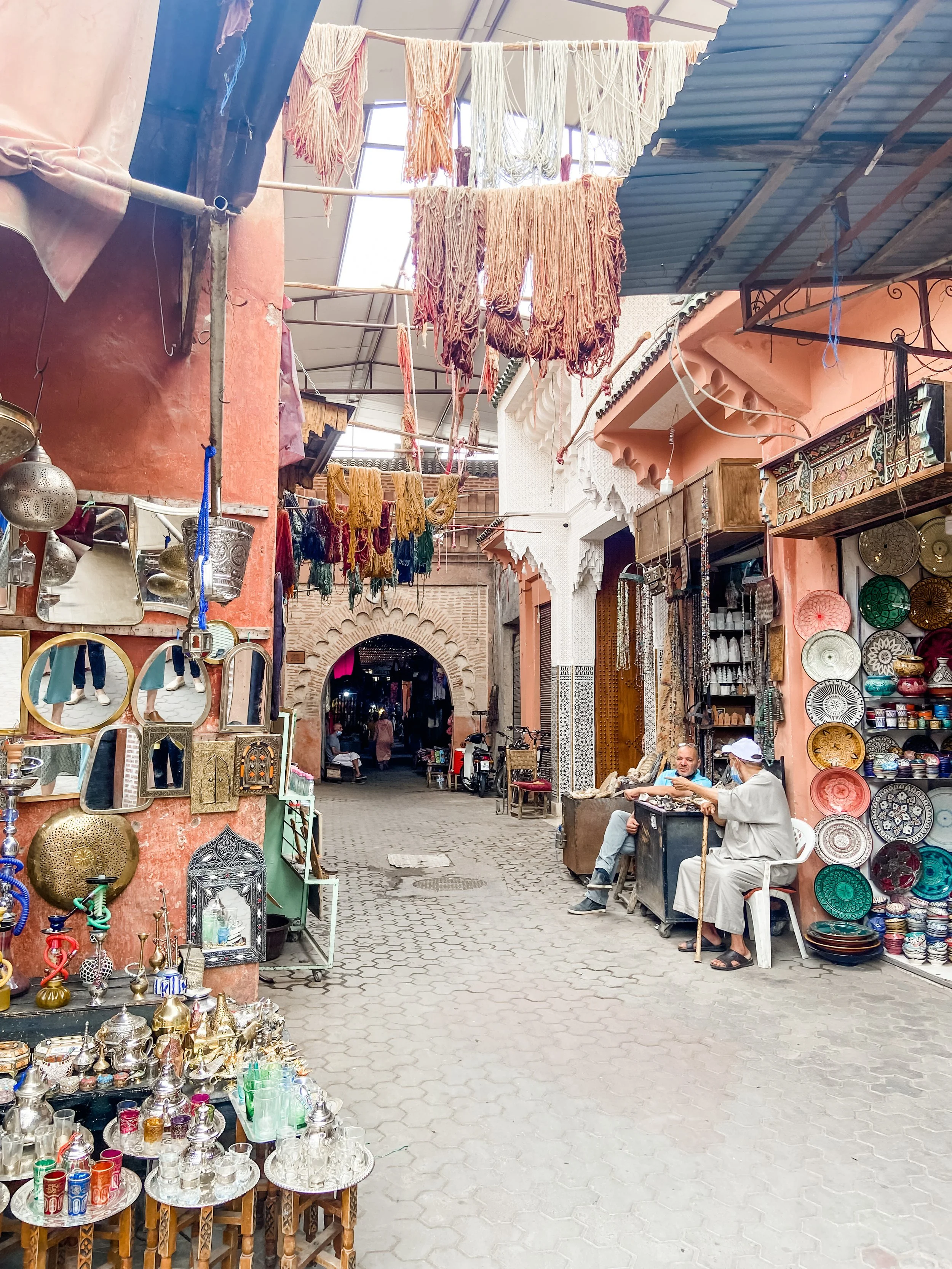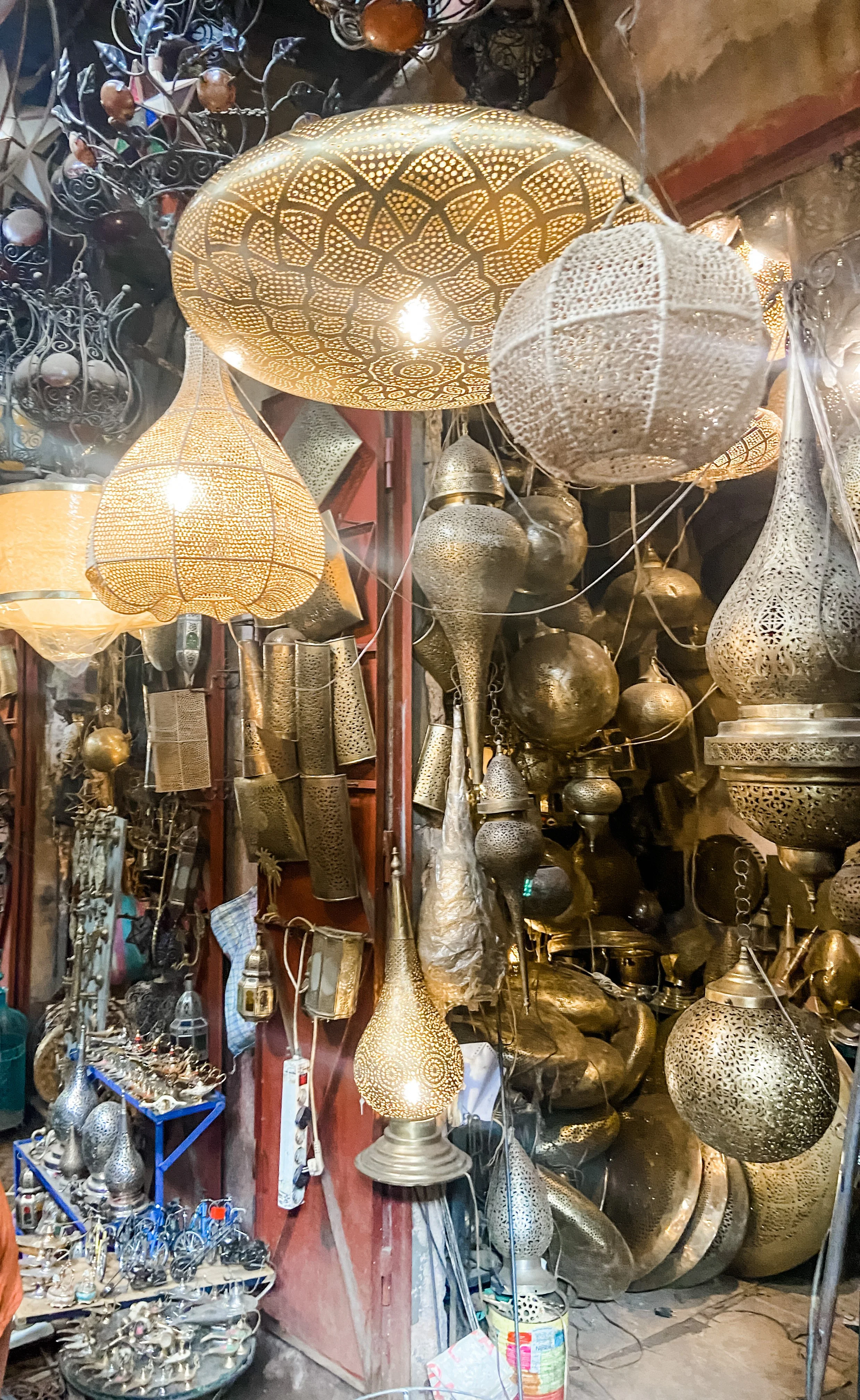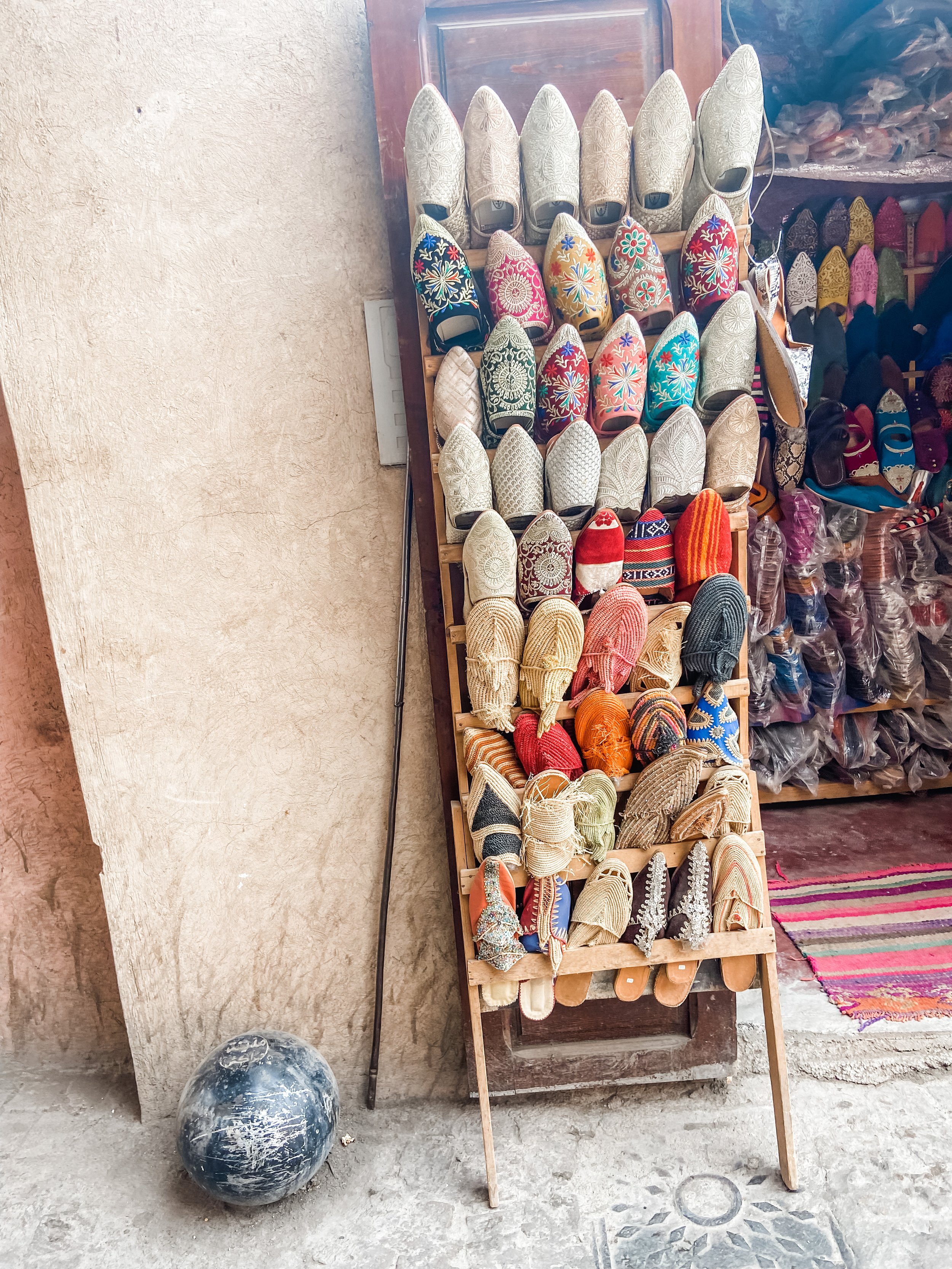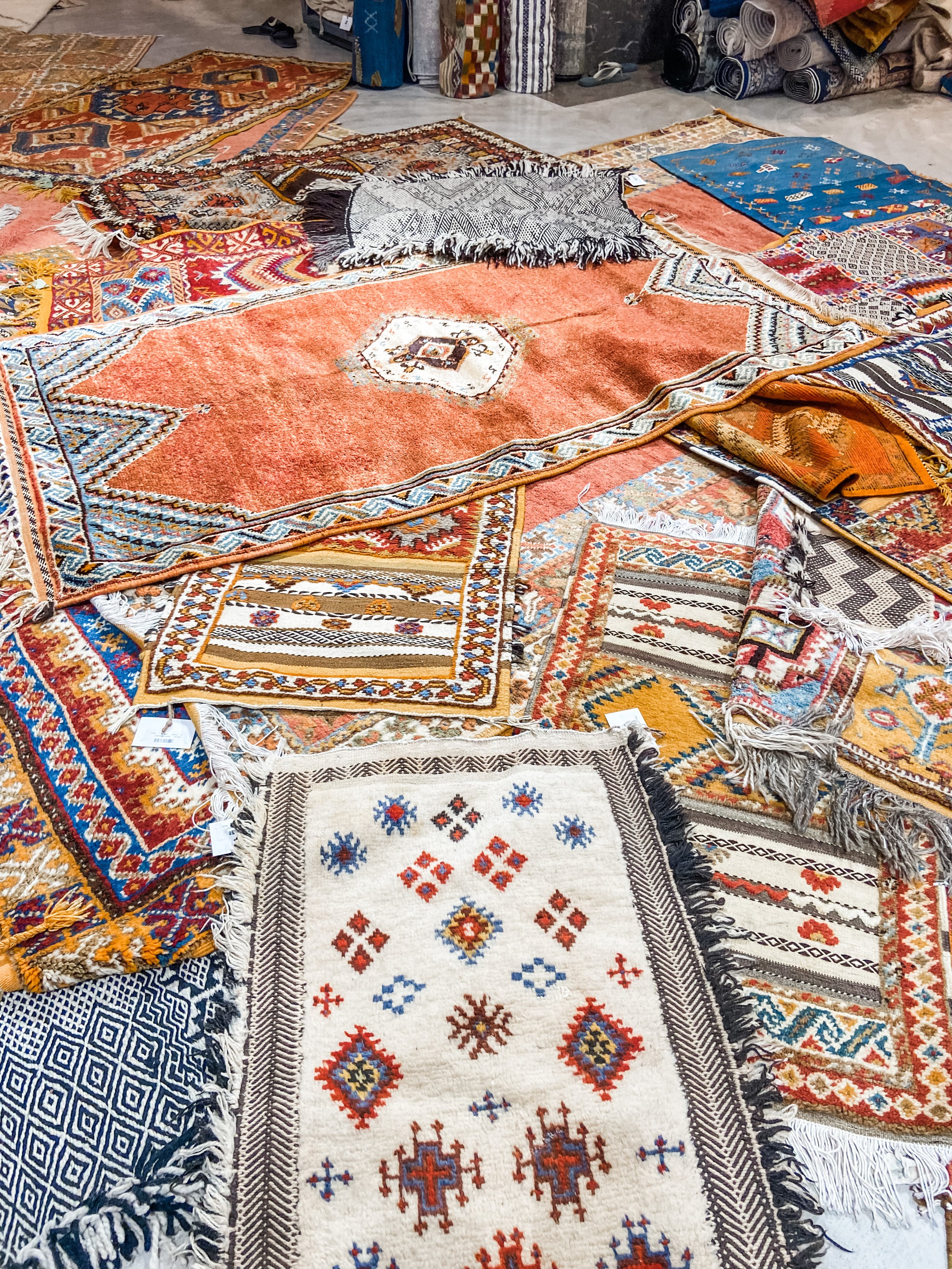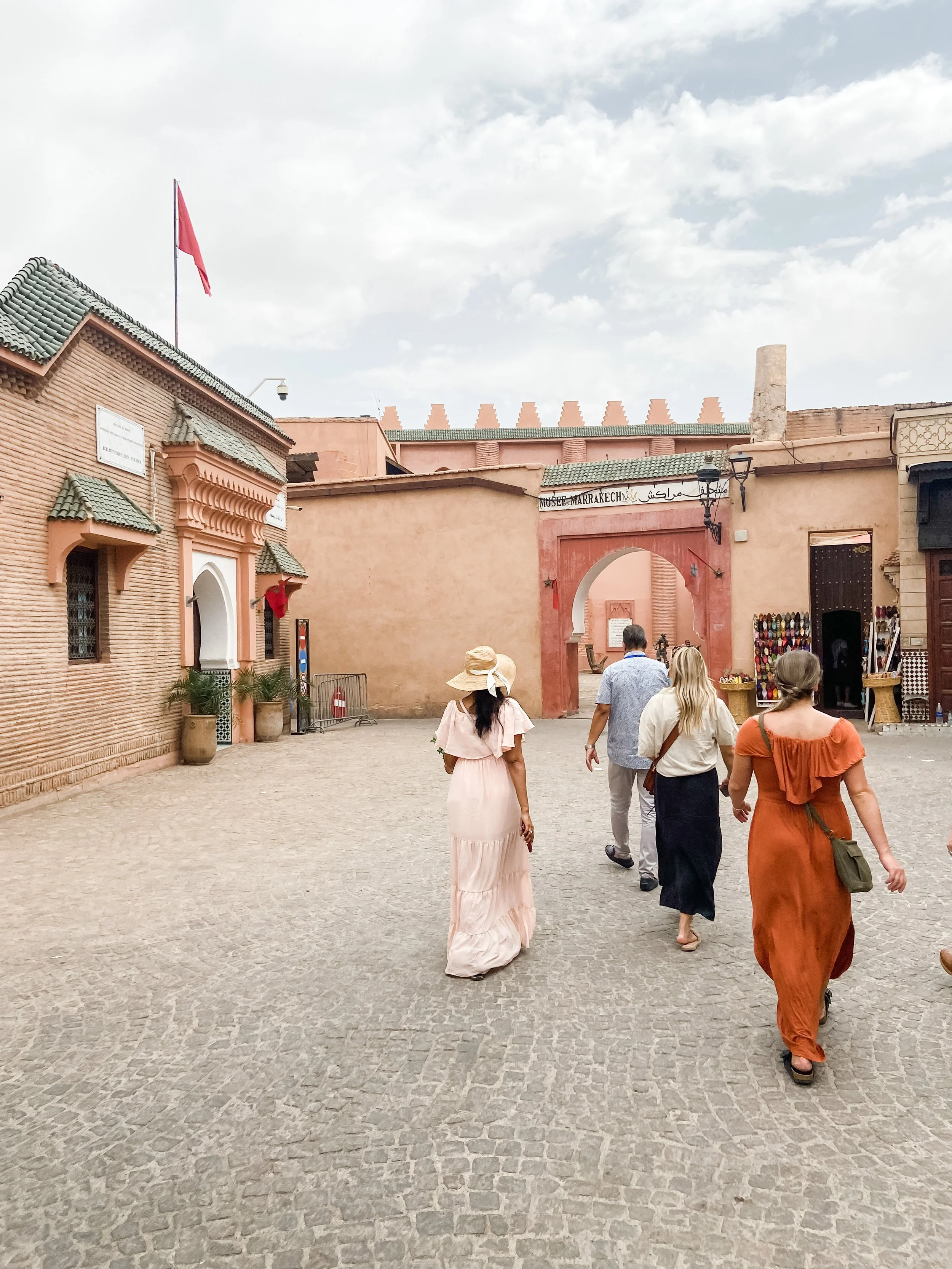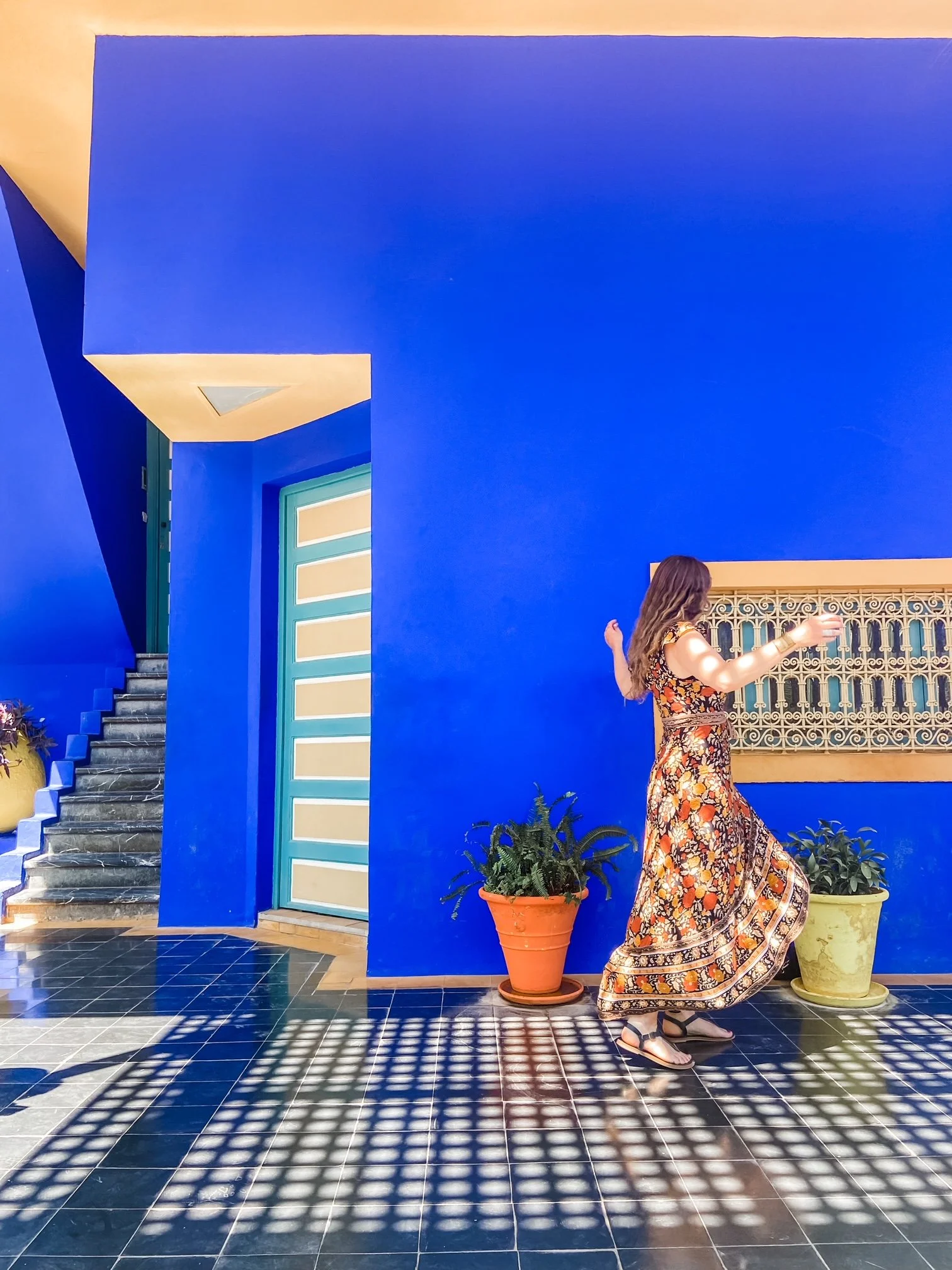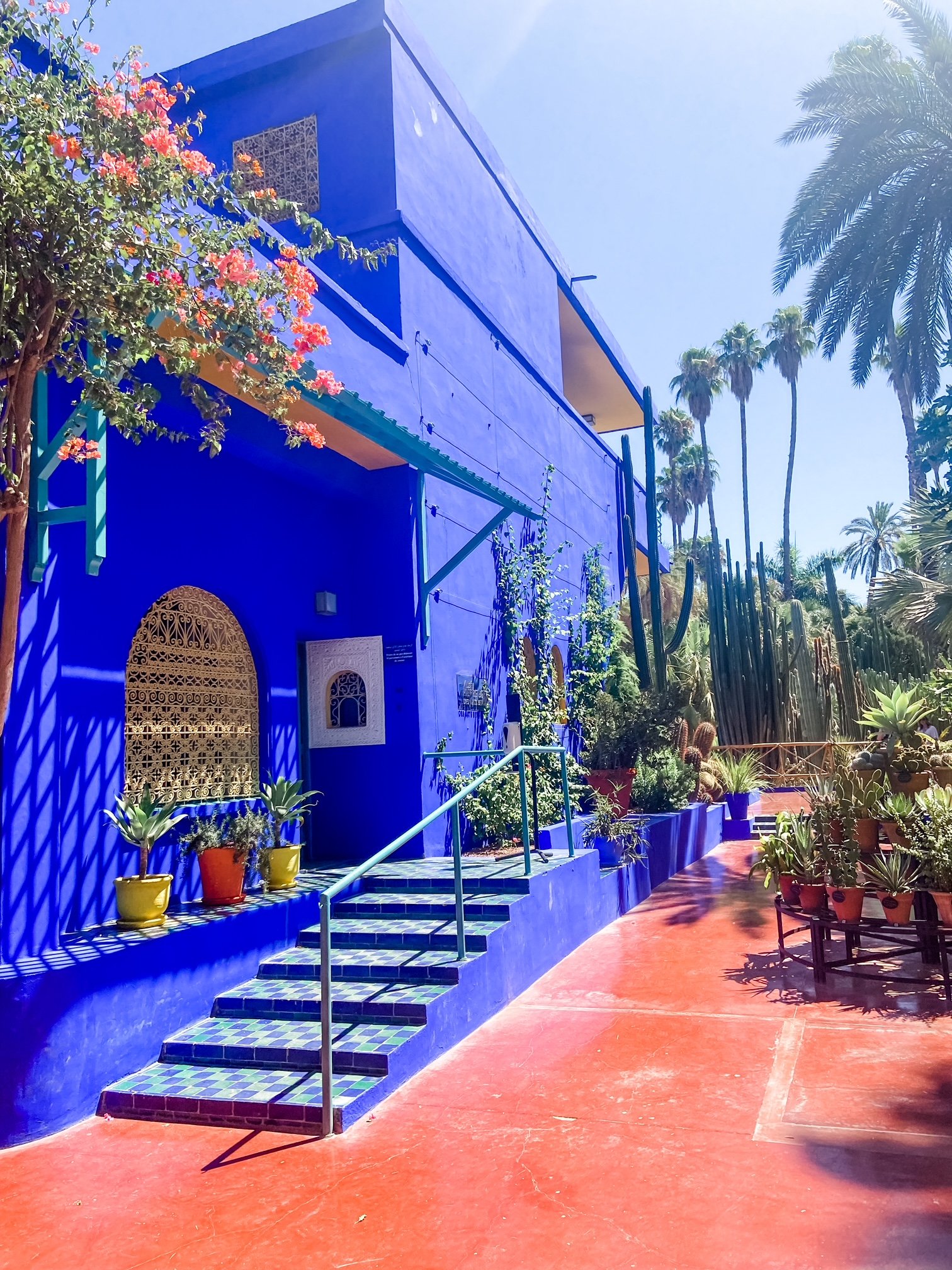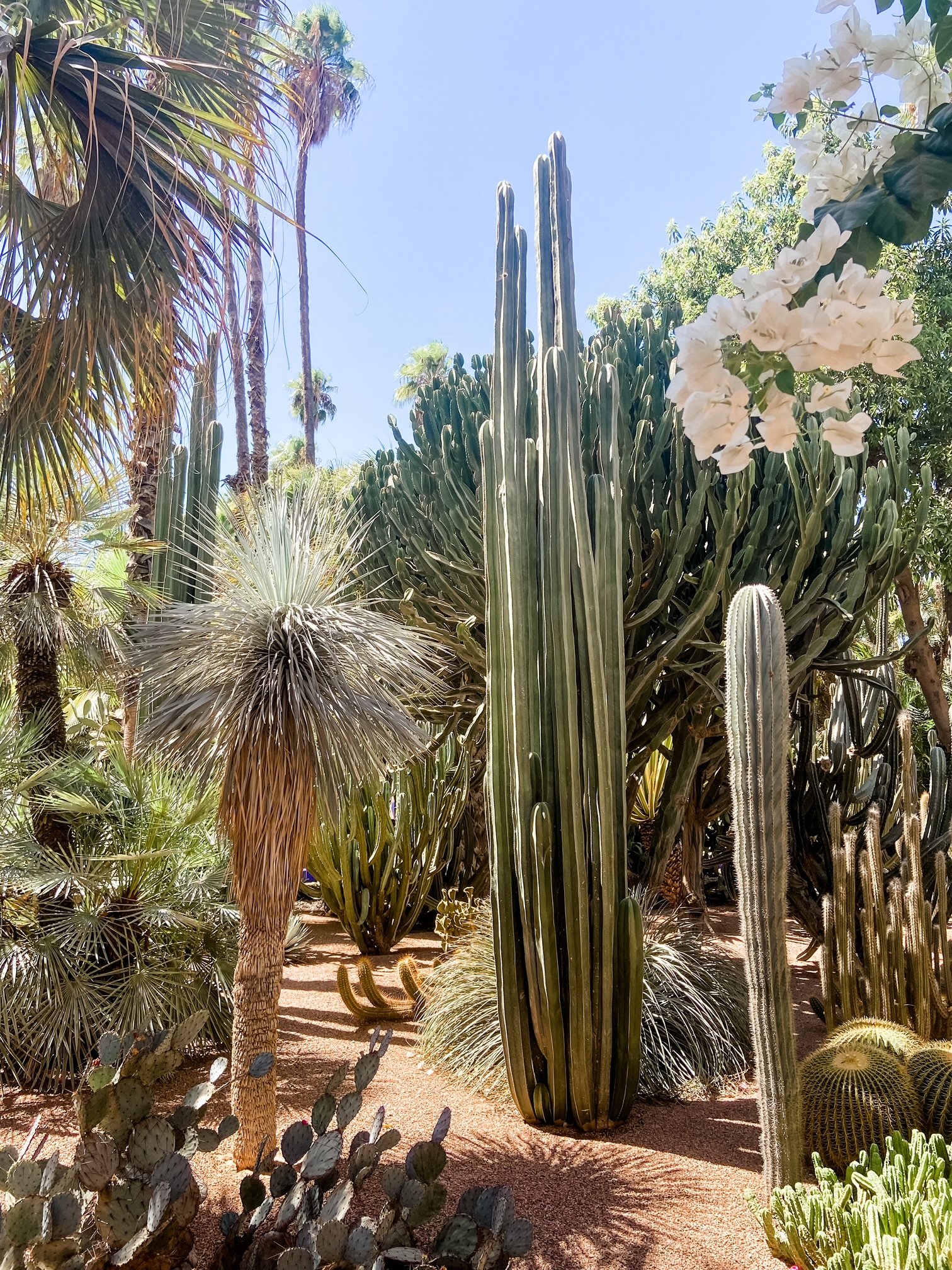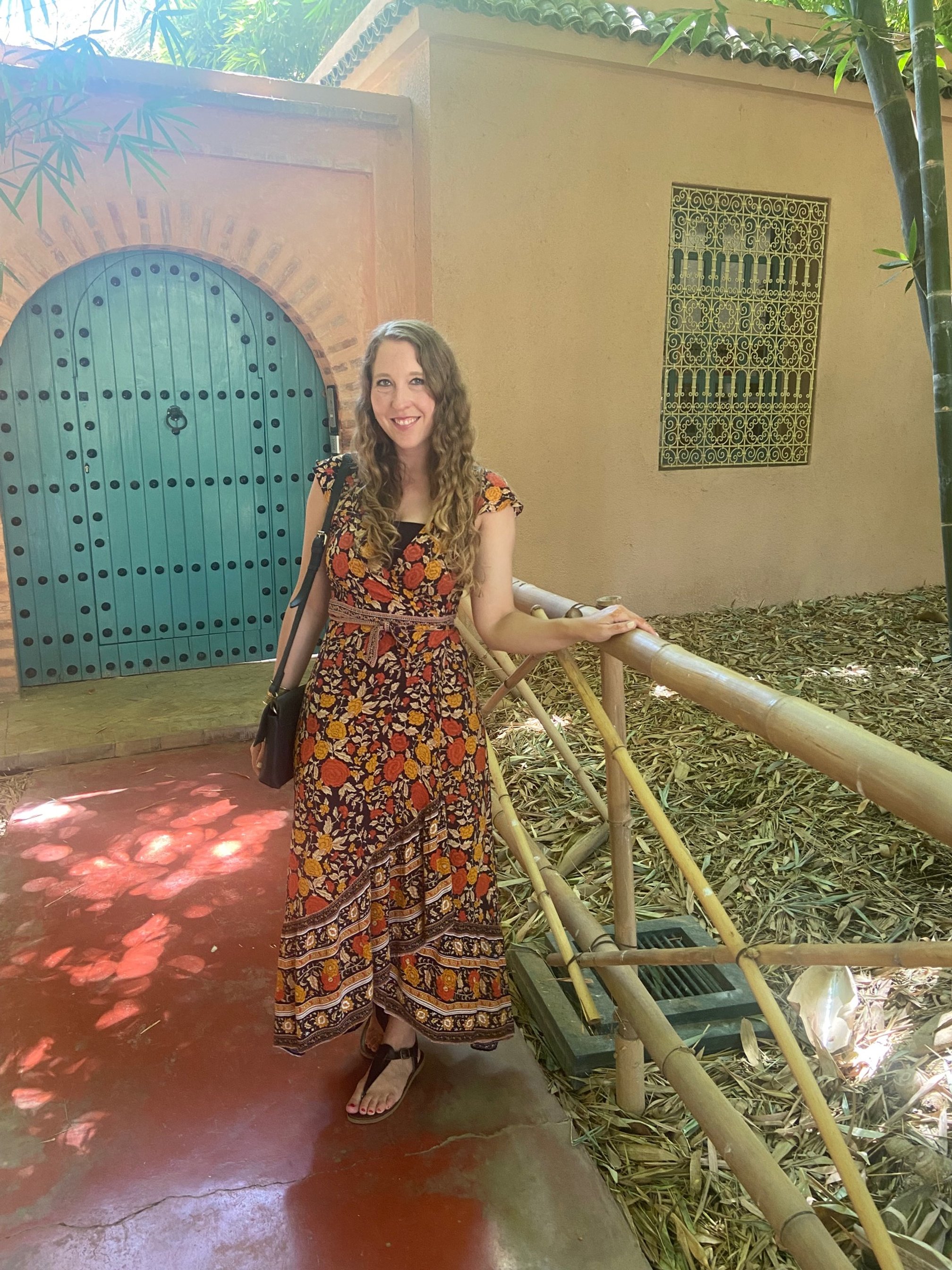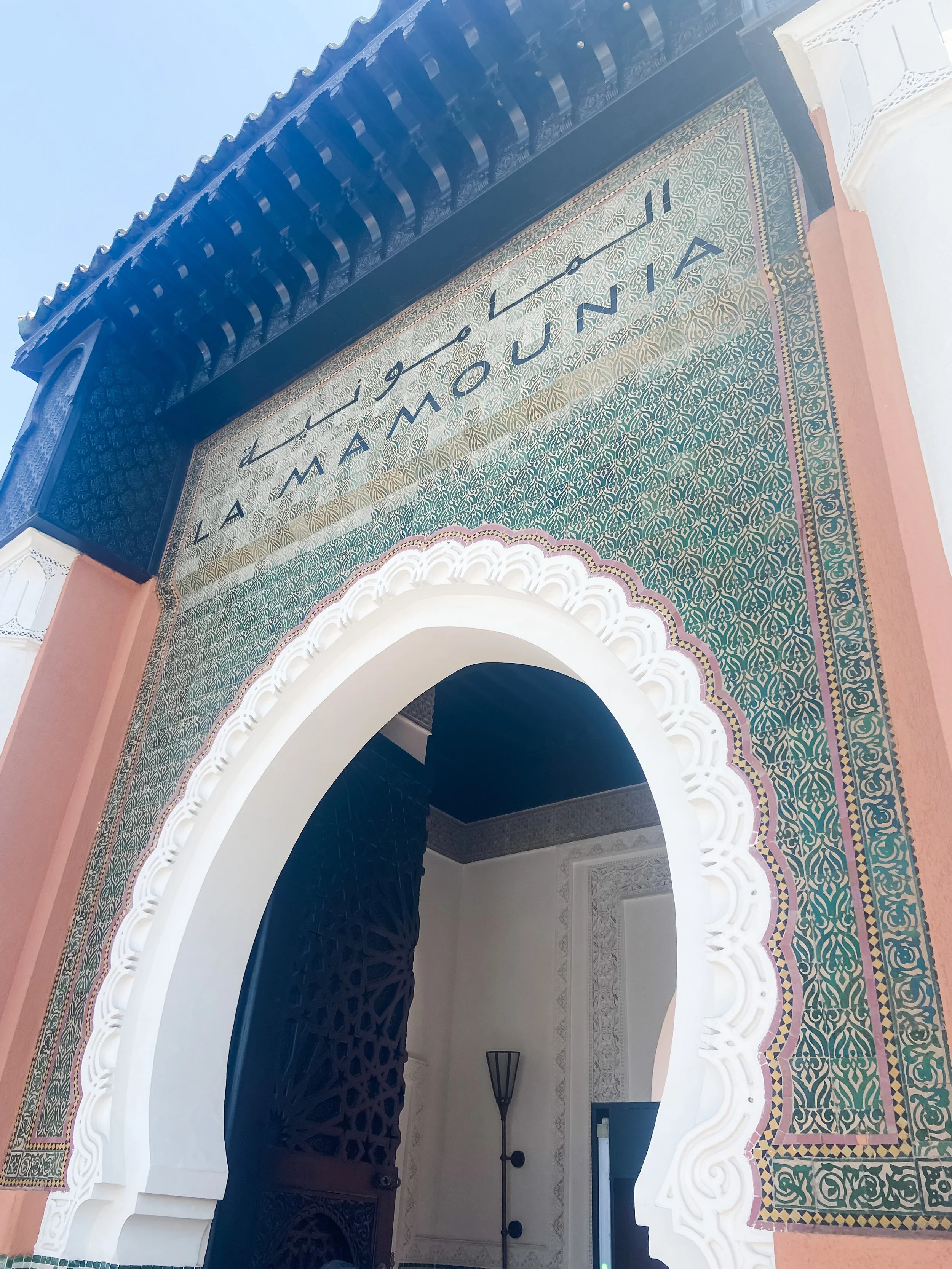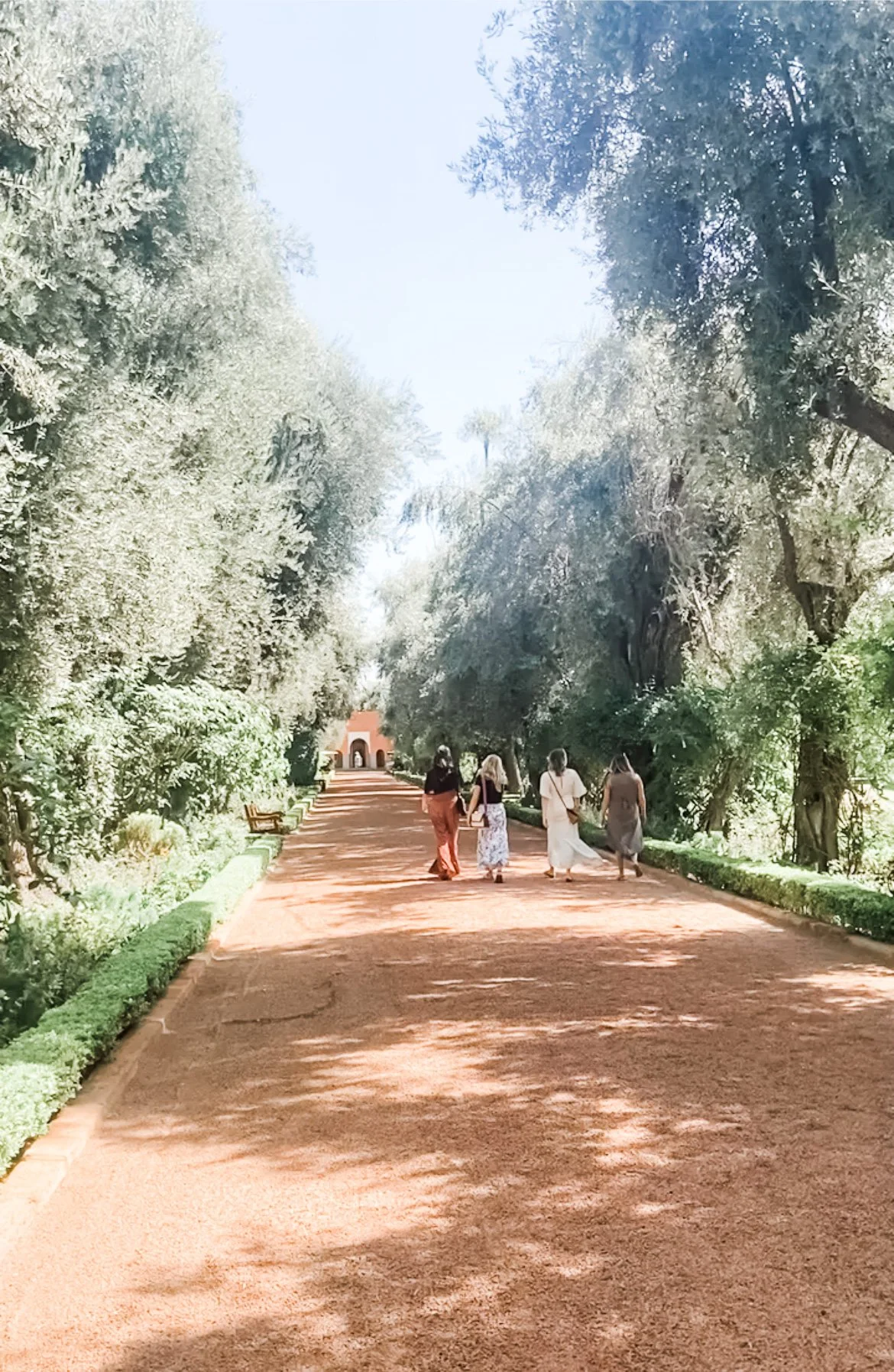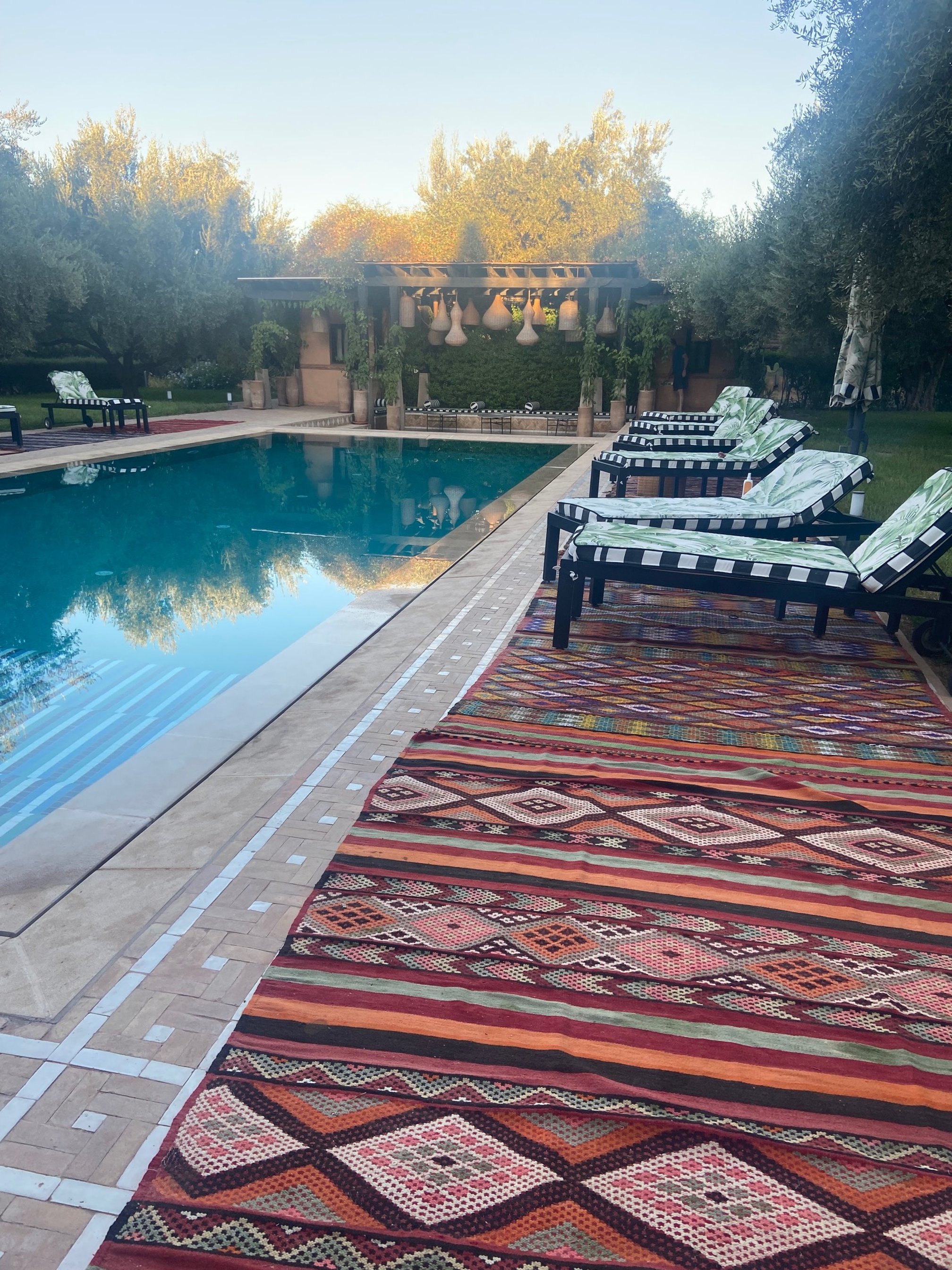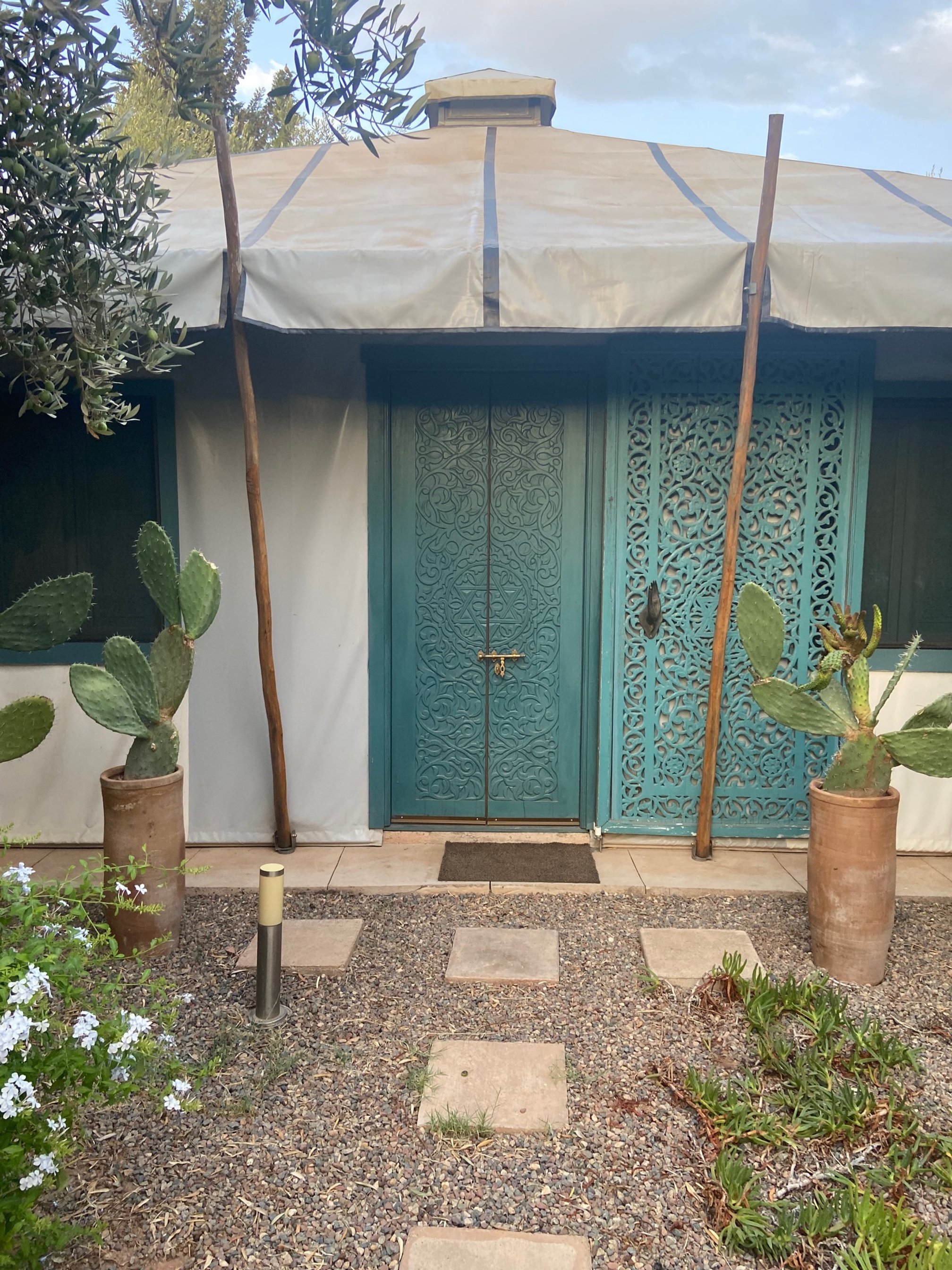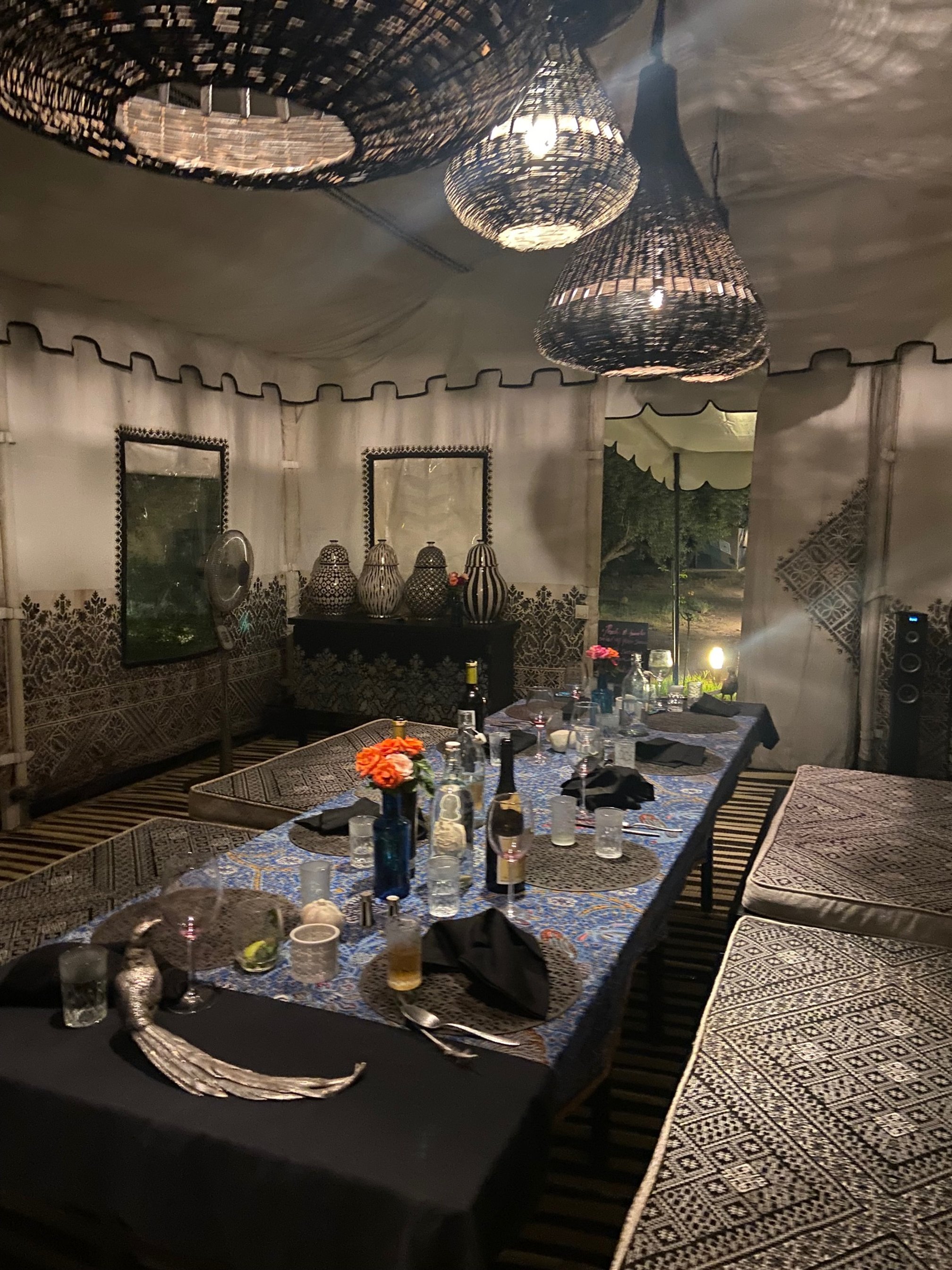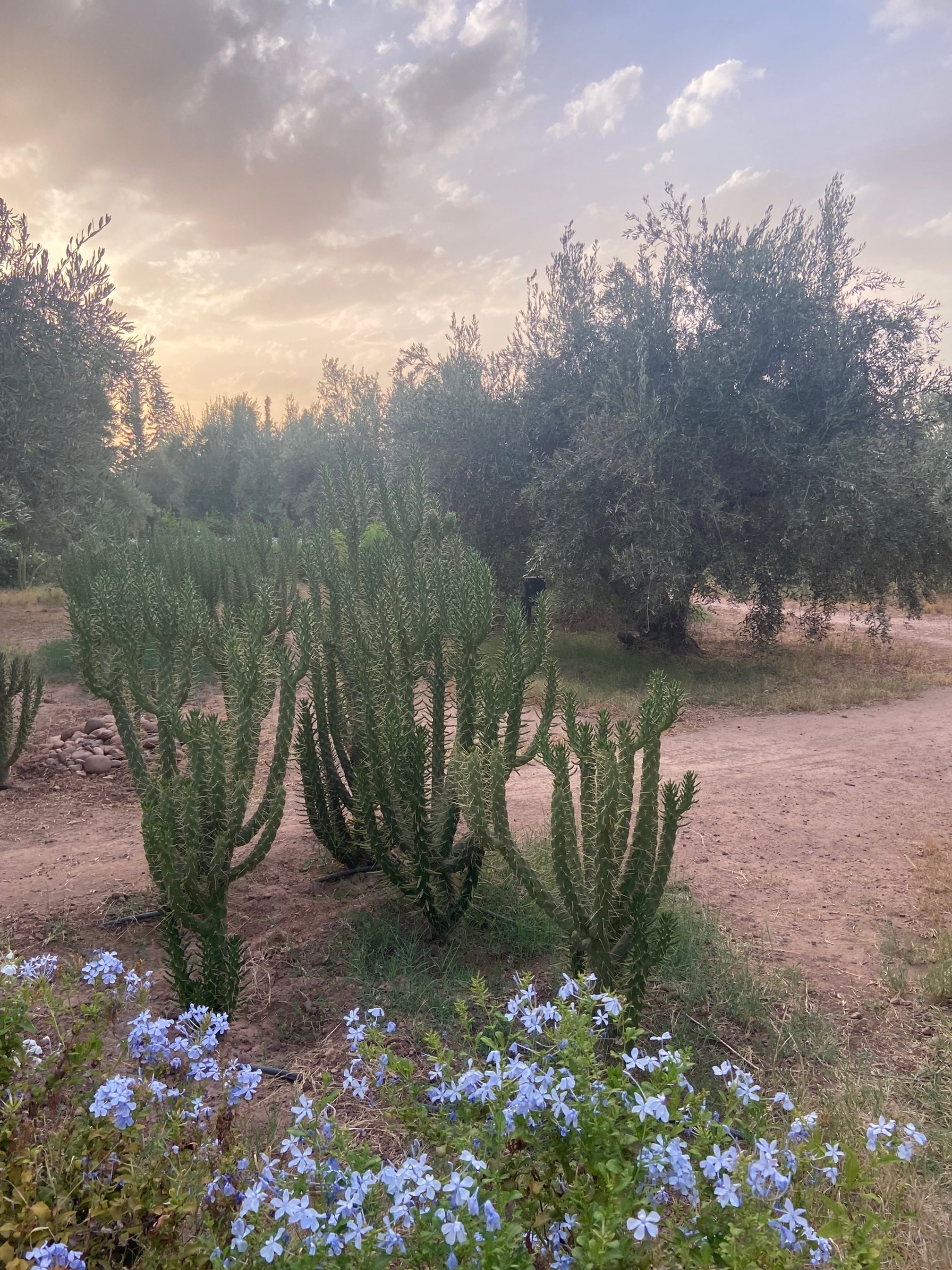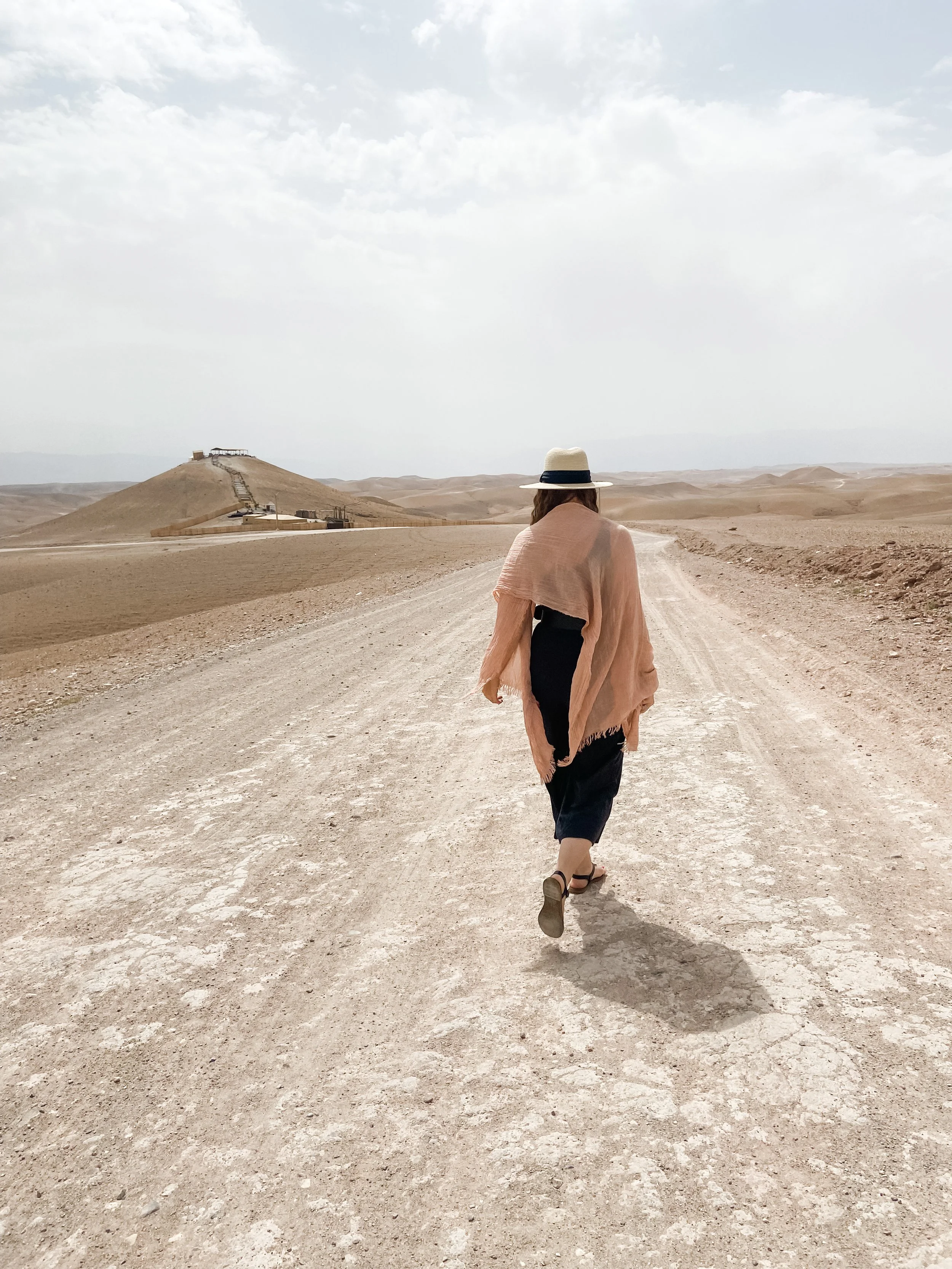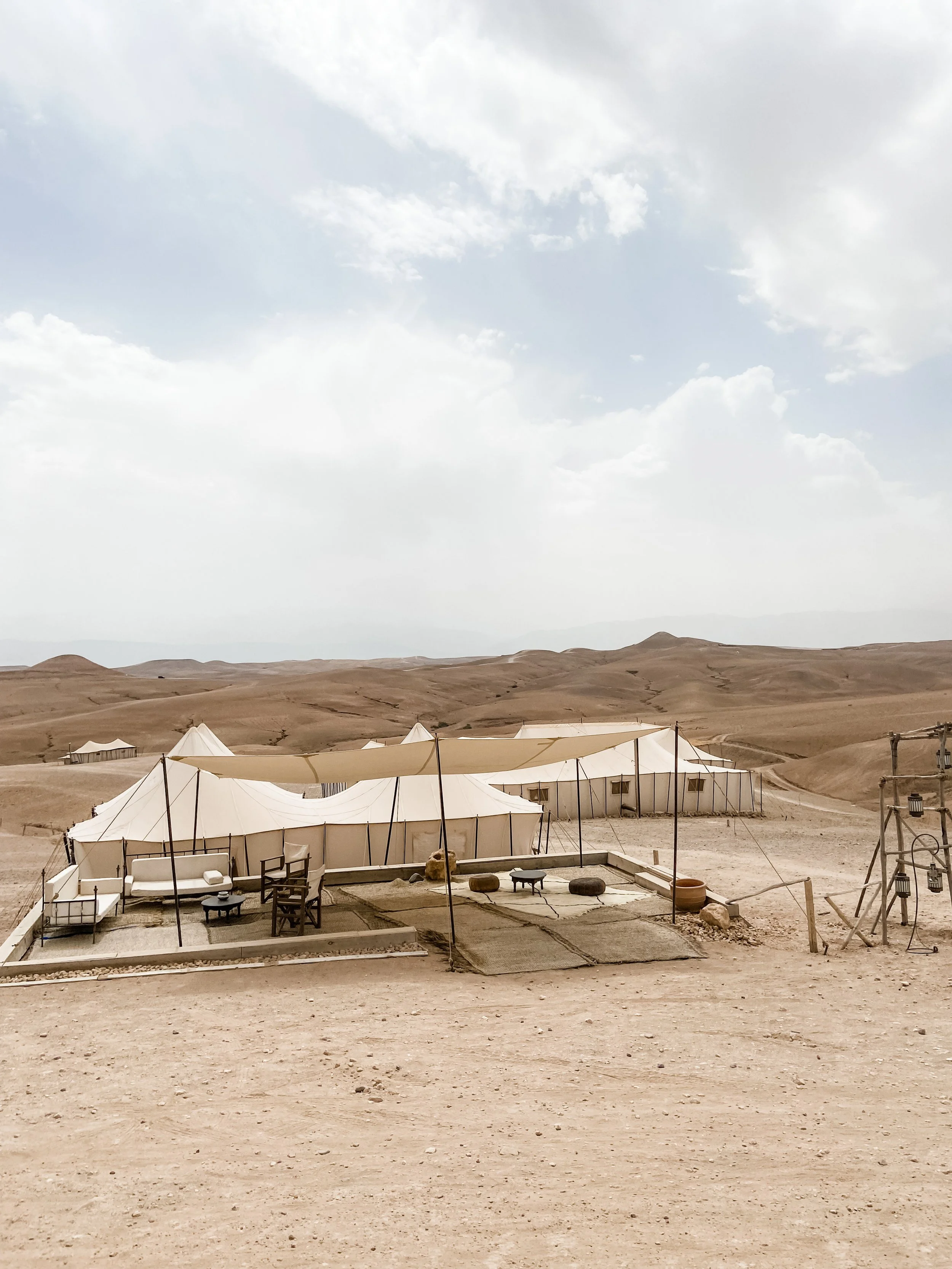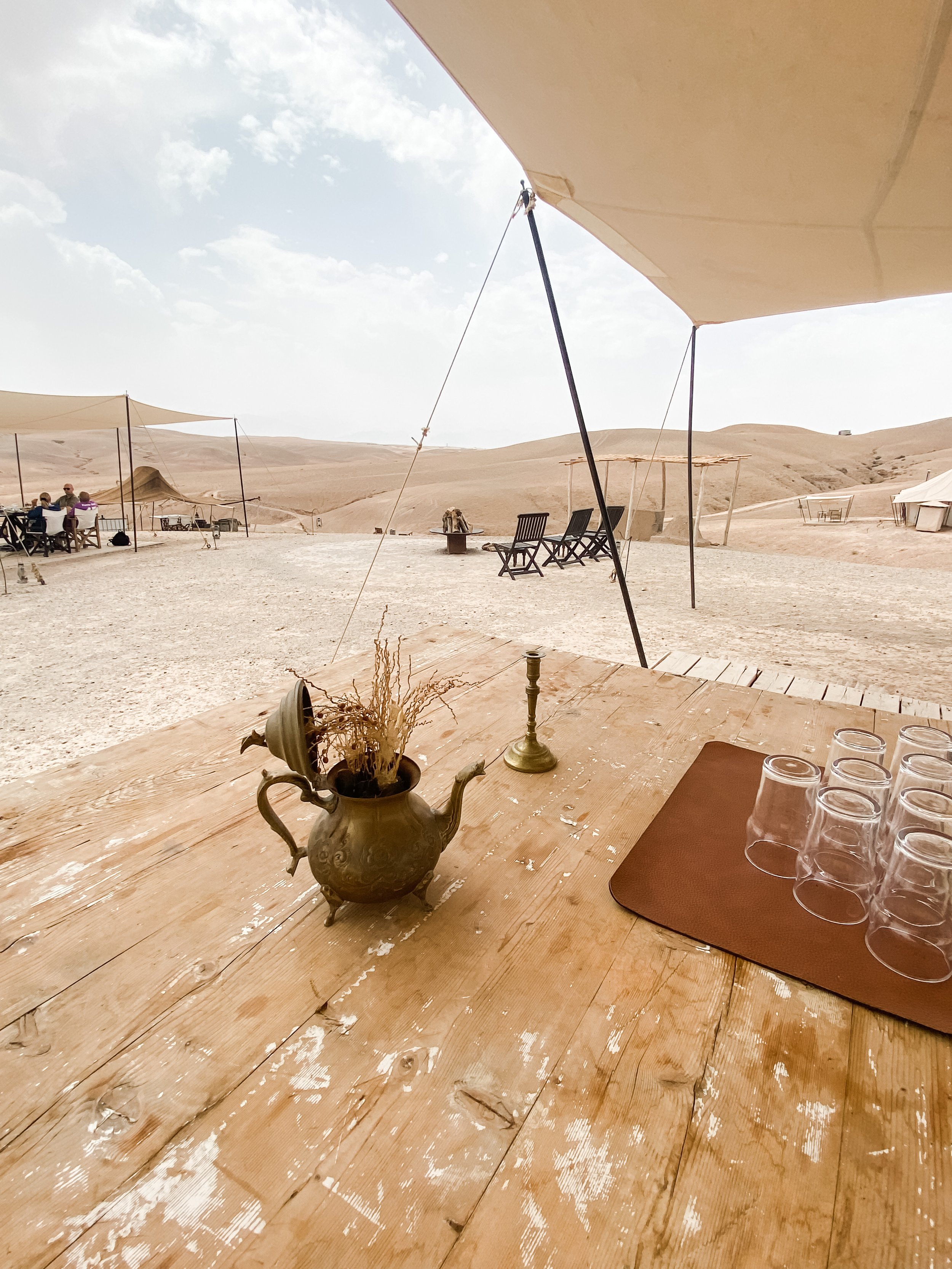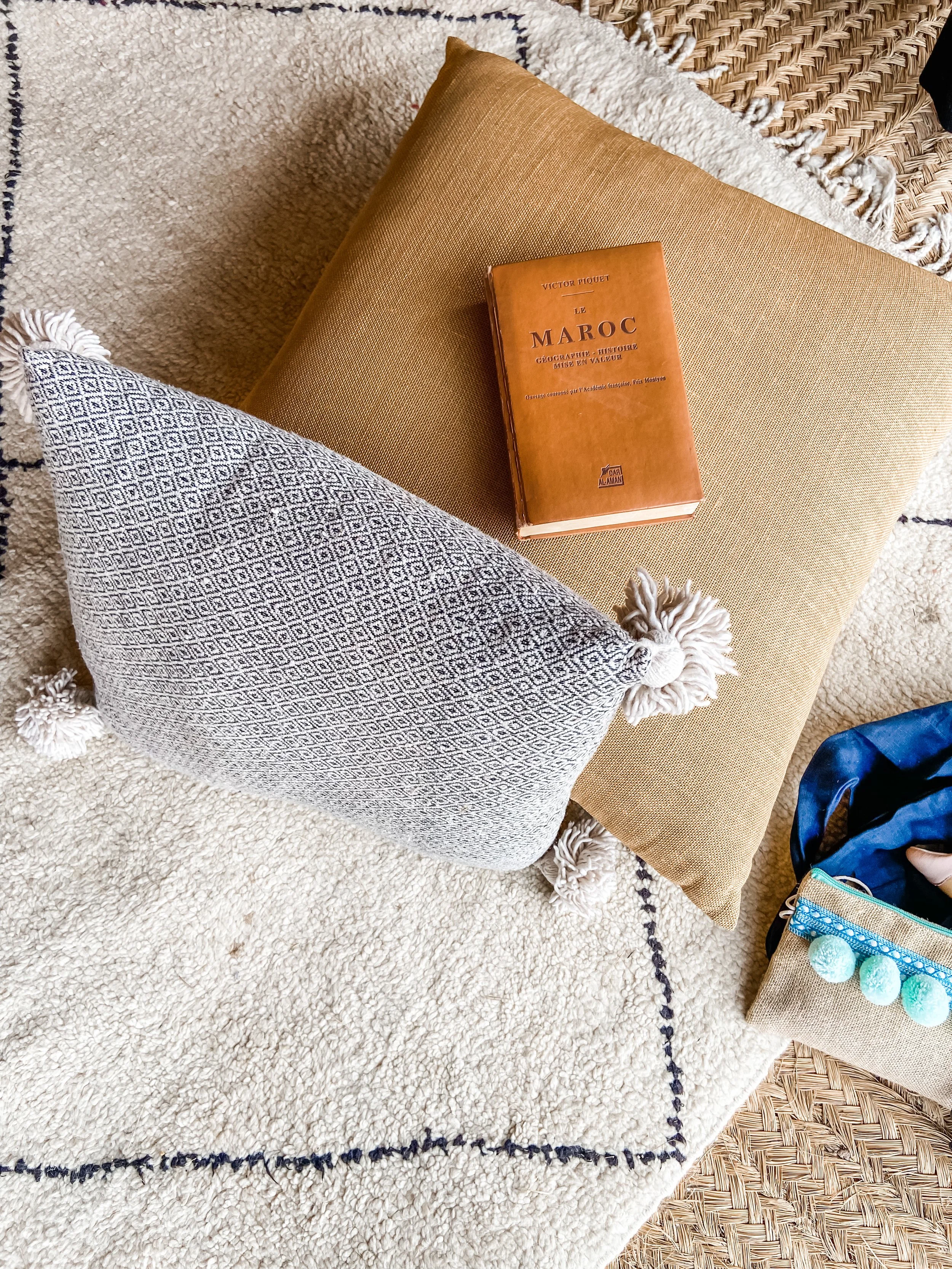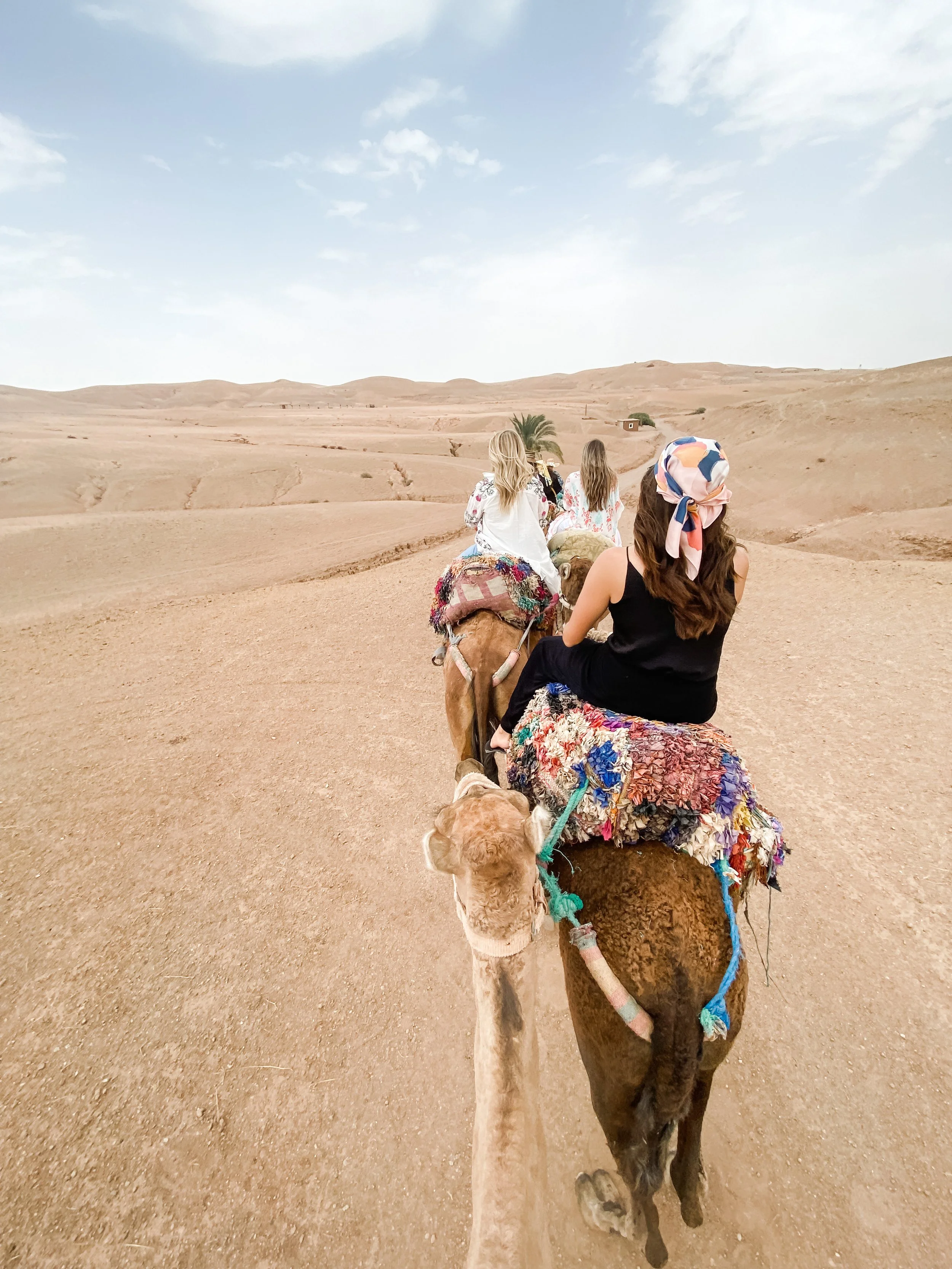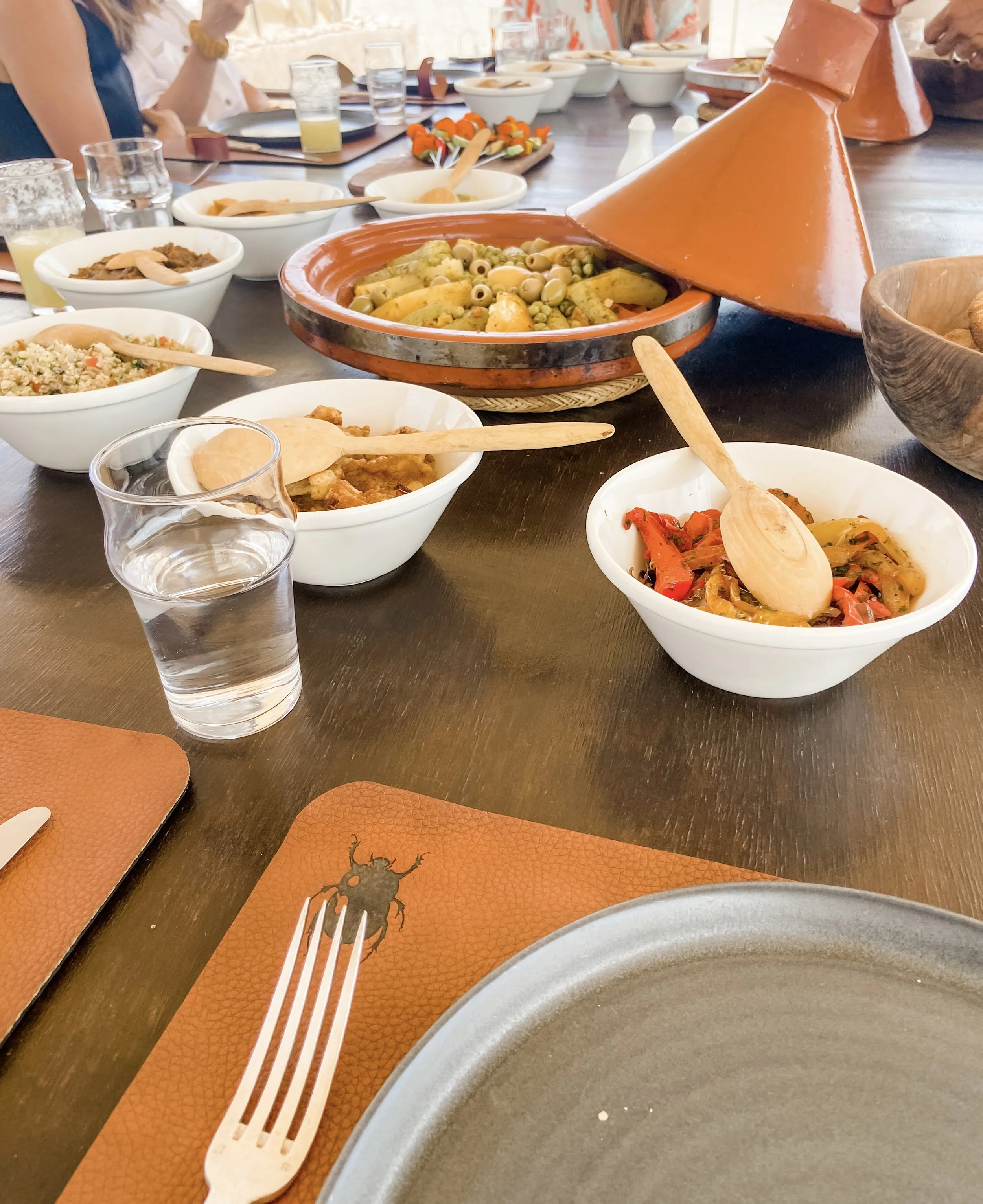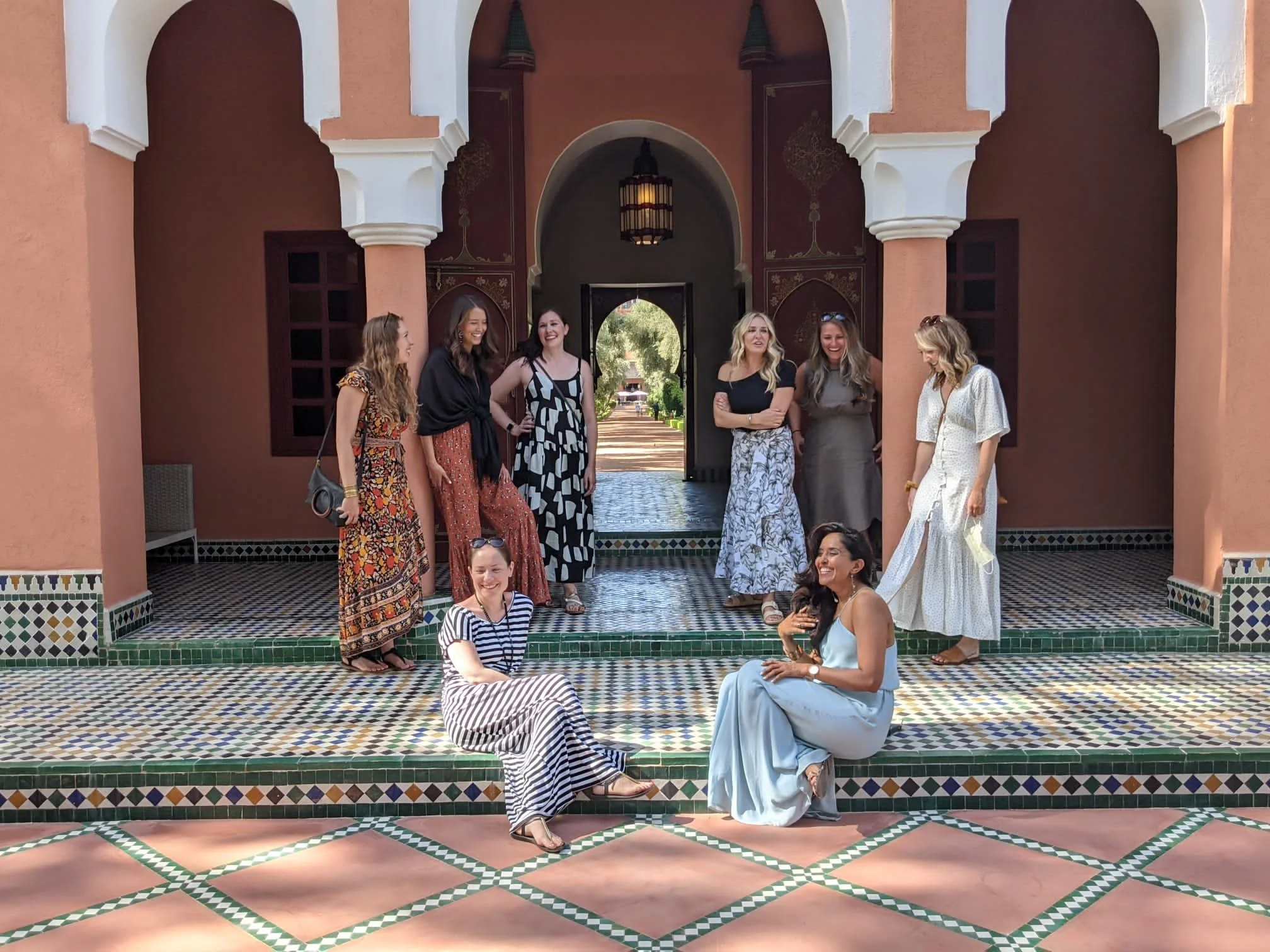Marrakesh Guide: 6 Magical Experiences in the Red City
Walled cities, a land flowing with spices and dates, intricate archways, snake charmers and fortune tellers, henna and palaces, talismans and genies.
I tend to shy away from the word “exotic” because it implies a sort of “otherness.” But when you think about what you picture when you hear the word “exotic,” Marrakesh is likely it.
Maybe the better word is “mystical” or “magical” or simply the humble remembrance that this city, this way of life has been around for thousands of years and the “other” here is you. Or maybe its magic is the loss for words, the need go and take in the sights, smells and mystery of a place unlike any other.
Read on to discover what to do Marrakesh and everything you need to know before you go.
Meeting Marrakesh
When you land in Marrakesh, you’re immediately taken by the hot, dry air and the flat, rust city that flows into the flat, rust desert. The horizontal scene is broken up by the Atlas Mountains looming tall in the distance and towering minaret of the Koutoubia mosque – the tallest building in the city that points you in the direction of Mecca…and maybe the direction of your riad when you inevitably get lost in the maze-like medina.
Despite the arid climate, one of Morocco’s biggest industries is agriculture. Water high from the Atlas Mountains makes this a fertile land, where palm trees pepper the desert floor, watermelon carts and rich olive groves dot the side of the road and food is always fresh.
This fertile ground and its location on trade routes made Morocco a country that was in high demand throughout history, a land of multiple conquests. Morocco has been home to the Amazigh, or Berber, people for millennia, and Berber culture still plays a very important role in Morocco today. The Phonecians, Romans and other groups all tried to get involved in the region, until the Arabs invaded in the seventh century, which strongly influenced the religion and culture of Morocco. It certainly wasn’t smooth sailing after that, with many other conflicts and power plays, especially the French occupation of Morocco in the early 1900s that is still very much felt today. Morocco gained its independence 1956, but the adoption of these various cultures over the years has created a mesmerizing hodgepodge of art, music, cuisine and tradition.
Religion also plays a big role in Morocco. Islam is the official religion of the country, and many customs and laws reflect this, though there is a level of religious and individual freedom that might not be found in more conservative parts of the Middle East. Mornings and evenings are marked by the calls to prayer emanating from the nearest mosque, an anchor of the culture that added a “you are here” texture to the environment. Though life might not stop for tourists, it was incredible to think that in every home and shop, people were turning towards Mecca and stopping to pray. Adobe walls of houses separated them, but five times a day, they shared a ritual together. They knew where their neighbors were standing, the directions their faces were turned, a collective moment. I wondered what it would be like to respond to those chants. Would it feel confining? Or would it feel energizing, to have that type of spiritual and communal awareness in your life, to let the rhythms of faith guide your day?
But Marrakesh is also not without its mysticism. Everything has a meaning in Morocco: colors, numbers, symbols, even the famous Moorish arch shape. The Evil Eye – a jealous glance that can bring real-life harm – is warded off with sequins, the “Hand of Fatima”/khamsa or even a symbol of the eye itself. Jinn, or genies, are not wish-granters but spirits that can be evil or mischievous; talismans and amulets are worn for protection against sorcery or jinns with a mind of their own. On the positive side, barakah or the blessing of God, can be found in the most common of objects: bread, wool, etc.
Today, all these forces – history, magic, art, God – still pulse through Moroccan culture, timeless yet ever-changing, infused with a warm hospitality and vibrancy that transfixes, sparks curiosity and always leaves you wanting more.
6 THINGS TO DO IN MARRAKESH
I traveled to Marrakesh with a small-group travel company called Eat. Pray. Move. Each day started with a yoga class and then an excursion into a cultural experience in the city. I have them to thank for the perfectly planned itinerary and lovely experiences they arranged – my favorites of which I'm sharing here. If you want to go with a group and have all the details covered for you, I highly recommend them.
Explore the maze of the Medina
“Medina” is the term for the old, walled portion of ancient cities, and the Marrakesh medina is a world all its own.
In cities like Marrakesh, it’s common for a home’s ventilation and views of the outdoors to come from above – through an open air courtyard in the middle of the home. For someone walking through the streets of the city, this creates a maze-like atmosphere of narrow, winding, curving streets that dead end, duck under archways and meet at intersections where everything seems to look alike. Though most buildings aren’t tall – and all must be shorter than the Koutoubia mosque minaret – they still seem to tower overhead and insulate you from anywhere that is not here.
In the Red City in particular, where all the buildings are made from pink clay, this maze-like feeling is elevated. Each building’s originality comes from the intricate doors – often with a men’s door and women’s door or men’s lock and women’s lock – that leave you wondering what kind of beauty lies behind the stucco-like walls.
Before you enter the maze, stroll through Jemaa el-Fnaa Square, a wide, open square that feels like the living room of the city, teeming with life. Fruit and juice stands line the walkways, with men holding out samples of their latest squeeze (buying a full-sized drink is worth your dirham – perhaps the freshest fruit juice I’ve ever tasted). Barrels overflow with nuts, dates and spices, and snake charmers, storytellers, henna artists and musicians lure you in. Restaurants with balconies surround the square for a birds-eye view of the action, and as night falls, dining tents and food stalls serving Moroccan street meat pop up all over the square.
Once deeper inside the medina, you’ll find homes, riads (guest houses/hotels), mosques (marked by green tile), restaurants, souks (shops) and all the elements of thriving neighborhood life. Though this doesn’t look like the suburbs you’re probably used to, the medina is not just a tourist attraction: it’s where people live, work, play and worship.
With streets too narrow for most cars, motorbikes are the high-speed transportation of choice, and they buzz through winding alleys at impressive speeds. Most people choose to walk, with vendors pulling heavy hand carts stacked with leather hides, wood or whatever is going to market that day. Women gather around the communal bread ovens, making dough at home and then bringing it out to the streets to bake for tonight’s dinner.
Many people opt to stay in a riad in the medina, which puts the medina’s treasures right outside your front door. You can also book a walking tour through the medina, which can help with the intimidation factor and give you lots of interesting intel on the cultural elements and background of the architecture, history and life of the medina.
When all the sun and navigation becomes too much, head up to the rooftop of a restaurant like Terrasse des épices for a refreshing cocktail and some breeze. Rooftops like this often have a life of their own and give a new perspective on the city as you rise above the web of alleys below.
Shop in the souks
Some people go to Paris to shop. I go to Marrakesh. I have seriously never shopped so much on a trip – I was running out of dirham, going way over budget and buying (beautiful leather) bags to get all my stuff home. But even if your dream style isn’t bohemian like mine, shopping the souks of the medina is a must-have experience.
The souks are endless rows of shops – mostly stalls with some dedicated buildings – overflowing with artisan goods of every kind: intricately carved metal lanterns, patterned poufs, brightly colored beaded slippers, embroidered caftans, tea glasses in hues of purple and blue and dipped in gold, handcrafted jewelry and, of course, the famous Moroccan rugs. You’ll find doors and door knockers and keychains, wedding blankets dotted with sequins to ward off the Evil Eye, tagines and bowls, woven baskets and freshly pressed oils for your skin and hair. When you think of stories from the ancient world about traders exchanging spices and goods from far-off lands, this is what you imagine.
The souks are roughly divided into sections – the leather section, the metal section, the carpet section, the food section where the vendors take their lunch break – but good luck trying to use this to orient. In case the sensory overload of a thousand brightly-colored, intricate designs spilling out of the packed shops into the streets isn’t enough, you won’t be left to shop in peace.
Prepare to be called to and summoned with each shop you pass, a perfectly prepared sales pitch waiting for you if you dare to make eye contact. This can be part of the fun – especially when you literally have the carpet rolled out for you and get to hear the stories of how the rugs are woven in the Atlas Mountains – but it can also be exhausting. Just keep walking if you don’t want to stop and engage.
Bargaining is expected and part of the experience here so bring your assertive energy with you. Expect vendors to start high when you ask the price; throw out a much lower offer and slowly walk your way up to the middle. Saying you want to look elsewhere and walking away can be a helpful tactic as can bundling multiple items together.
Whether you walk away with enough to furnish a home or just get a small keepsake, the souks are the heartbeat of the city and a great introduction to Moroccan style, where craftsmanship and beauty still abound.
Visit a hammam
Every culture has its preferred gathering spot – the English have their pubs, the Icelanders have their pools and Moroccans have their hammams…and I’m here for the way self-care is so integrated into the social life of the culture.
Hammams are local bathhouses that offer rejuvenating, cleansing rituals for the mind and body. Though there are private hammams, these are a fixture of public life and considered one of the keys of a neighborhood, alongside bakeries, mosques and schools.
In a heated steam room, you’ll cleanse, scrub and relax. The exact ritual varies slightly by hammam, but you can expect to receive or purchase the traditional black soap and water bowls, change (swimsuits or nothing are the norm) and go through multiple rounds of body scrubs in a heated room, either from a masseuse or self-scrub.
Unfortunately due to COVID, I had to skip the hammam while I was there, but this is a true cultural experience if you have time to visit one. Many hammams have men’s hours and women’s hours, so be sure to check before you go.
See the modern side of the city
Outside the walls of the ancient medina, Marrakesh is a sprawling city with restaurants, boutiques and sites to see.
Jardin Majorelle, the former home of French painter Jasques Majorelle and fashion designer Yves Saint-Laurent, is a popular site with its stunning gardens and signature “Majorelle blue” villa. Inside the house, you’ll find the Berber Museum, which is a small-but-beautiful showcase of Berber clothes, jewelry and artifacts.
Rue Majorelle, the block outside of Jardin Majorelle, is a great place for shopping outside of the souks. Here you will find many of the hallmarks of Moroccan decor – poufs, rugs, those tiny striped tea spoons – along with more modern clothing, bags and jewelry, still with a Moroccan flair. Here, it’s not customary to bargain, so plan to pay the price on the tag (which might or might not be welcome depending on your personality).
You can also enjoy one of Marrakesh’s many luxury hotels, including the stunning La Mamounia – a former palace on the edge of the medina that is every bit as opulent as one would hope. Every element of the design is beyond intricate, with colorful tiles, chiseled archways, velvet decor and immaculate royal gardens. Go for high tea and macaroons, a taste of the French influence that is never far away.
Spend a night at Peacock Pavilions
If you want to get out of the hustle and bustle of the medina and experience a desert retreat without leaving Marrakesh, book a stay at Peacock Pavilions, a stunning oasis located on an olive grove in a small village on the outskirts of the city. This design-driven hotel features seven rooms spread across three different buildings, each with their own magical decor that is nothing short of perfection. Sip a pomegranate mojito by the lantern-lit pool, wander the property or shop the well curated treasures in the on-site souk. If you’re lucky, you might even get to experience a showing of Casablanca under the stars.
Peacock Pavilions was my home for the week in Marrakesh, and it made the trip so special. Due to COVID curfews, we ate dinner here every night, and I still never got tired of the amazing food or spending time on the property, where the ambiance changed each day with such thoughtful attention to beauty and detail. Though it’s a bit outside of the city and geared more towards retreats, owners Maryam and Chris are amazing hosts and can help arrange tours, cars and experiences for all types of guests.
Go to the desert
Even if you don’t have time to venture all the way out to the Sahara, you can still get your fix of desert vibes at one of the outposts on the edge of Marrakesh. The Agafay Desert is located just south of Marrakesh, and here you’ll trade the sandy hills of the Sahara for frozen sand dunes and a moon-like landscape.
When I was there, we visited Scarabeo Camp, a luxury campsite on one of the desert hills. The canvas tents looked like a British explorers’ camp, with glamping tents for sleeping, communal tents for eating and lounging and, somehow, a pool in the middle of the desert. We were just there for a day trip and enjoyed tea, cookies and an incredible meal at the camp, followed by a camel ride through the desert. Yes, it was as dreamy as it sounds!
There are many other luxury camps in the area for a once-in-a-lifetime night under the stars, and there are also more adventurous activities like buggy riding and mountain biking.
IF YOU HAVE MORE TIME…
I was in Marrakesh my entire time in Morocco, but I view my first trip to any country as a bit of a “scouting” trip if I were to go back. Here is my list of places I want to visit next in Morocco:
The Sahara: This is an excursion, typically a multi-day one, as the Sahara isn’t super close to Marrakesh. But if you want iconic desert sand dunes and full on Lawrence of Arabia landscapes, this is the place to go. There are many group tours available from Marrakesh to visit the Sahara.
The Atlas Mountains: This is easier to do from Marrakesh and might even give you a chance to visit a Berber village. Tours, private drivers and I think even some self-drive options are available from Marrakesh.
Chefchaouen: The famed blue city is on my bucket list without a doubt!
KNOW BEFORE YOU GO
Getting There: If flying, you will arrive at Marrakesh Menara Airport. This is a modern, clean, attractive airport that is easy to navigate. If flying from the U.S., most flights will connect through Amsterdam or Paris. The flight to Paris is around 10 hours from the East Coast and the flight to Marrakesh is another 2-3 hours. If connecting through Charles De Gaulle, leave enough time to go back through security, required for international connections.
Dress: As a predominantly Muslim country, most people – women and men – in Morocco still dress fairly modestly. You won’t find any laws governing what you can and can’t wear, but I recommend adapting to the local culture out of respect and to avoid unwanted attention. While I saw a wide range of dress — some people in loose fitting clothing and others in jeans and t-shirts, some women with their hair covered and others who did not cover their hair — the overall style was modest. In the medina and other more traditional parts of the city, a good rule of thumb is to cover your shoulders and knees. In your hotel or really touristy areas, you’re welcome to dress how you want, and normal swimwear is totally fine at hotel pools.
Keep in mind that it can also be really, really hot, so loose-fitting, natural fabrics that protect you from the sun are a good idea culturally and practically. Some good outfits to pack for women are long flowy dresses, knee-length or maxi skirts, wide leg pants, cotton t-shirts or tank tops with a scarf to cover your shoulders if needed and jeans or leggings with flowy tunics.
Safety: Morocco is one of those places where I heard mixed stories about safety, with some friends saying they didn’t feel 100% safe there and others traveling around solo without a care in the world. Traveling with a small group of women, I personally felt perfectly safe in Marrakesh and found people to be very welcoming and open to tourists. I was glad to be with a group on my first visit, and in general I would recommend traveling with a group or at least a male partner/friend for women. Hiring a trusted private driver and staying in a trusted riad or hotel is a good idea, and I’ve heard to avoid dark alleys and dead ends in the medina after dark (a good idea in basically every city on the planet?). As with traveling anywhere, be smart, keep your purse or wallet close to you and recognize that you’re in a culture that might be different from your own, so be respectful.
Language: There are three primary languages in Morocco: Berber, Arabic and French. The Moroccan dialect of Arabic is called Darija and is what is spoken most often. Berber is the indigenous language of the area and is now included on signage. But for the most part, you’ll hear a lot of Arabic and some French spoken while wandering around. Most people working in areas that cater to tourists like hotels, restaurants and the souks spoke English, so you will likely be able to get by just speaking English if you stick to touristy areas.
Money: While some places take credit cards, especially in the newer parts of the city, it’s a good idea to get plenty of cash for your time there, especially shopping in the souks. The Moroccan currency is called dirham, and 10 dirham is about equal to 1 U.S. dollar. You can easily get cash out and exchange money at the airport; you can withdraw money in dirham using your credit card and don’t have to bring American dollars. You might find other places to exchange money around Jemaa el-Fnaa, but the airport is your best bet.
Food: The food in Morocco was some of my favorite food in the world. I was more than happy eating it every day and was hardly tired of it by the end of the week. You will recognize some elements of Middle Eastern cuisine, but it truly has a flair and flavor of its own. Expect lots of vegetables, couscous and lamb cooked to perfection and served with style in decorative tagines.
Drink: Get ready to drink a lot of mint tea, sweetened with enough sugar to make your Southern grandma proud. Mint tea is handed out in Marrakesh like handshakes, and you’ll be greeted with sips of it just about everywhere you go. The show and ritual of it is as delicious as the tea itself, with beautiful, intricate glasses, silver tea pots and elaborate pouring techniques. Alcohol is not a big part of the culture in Morocco, but you’ll likely find it on the menu at hotels. When it comes to water, drink LOTS of it, and try to stick to bottled or purified water to be safe.
CULTURE TRIP
Watch
Casablanca
The Man Who Knew Too Much
Read
Listen
My Morocco Playlist on Spotify (I discovered the very cool Saharan blues scene making this playlist - definitely worth reading about!)
© Kristen Shoates
